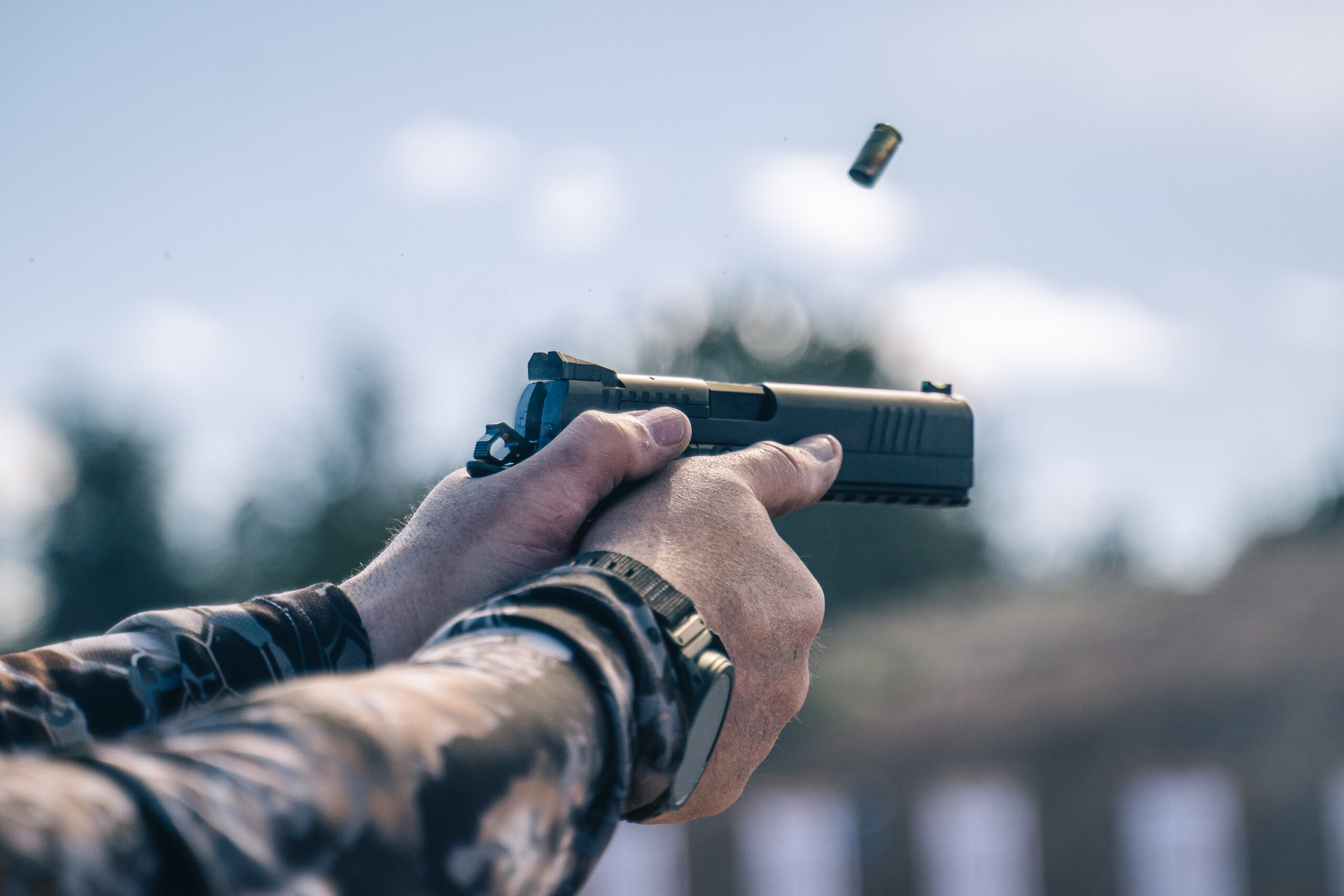We may earn revenue from the products available on this page and participate in affiliate programs. Learn More ›
The shooting public has a seemingly insatiable desire to check out new pistols, which is why our review of the best handguns is one of the most eagerly anticipated stories Outdoor Life publishes each year.
Once again, we traveled to Gunsite Academy in Paulden, Arizona, to wring out the newest blasters and, once again, the field of new handguns didn’t disappoint.
We spent a little over a week flinging lead at paper and steel to figure out the best handguns of 2023, putting more than 10,000 rounds of 9mm, 10mm, and .45 ACP downrange. It’s a test unlike any other you’ll read, an honest side-by-side evaluation of latest handguns that no other publication or group comes close to replicating. As part of our time at Gunsite we also conducted a big review of the best rifles of 2023 and, for the first time, we’ve done a roundup of the best 1911s. The feature on the best rifles goes into more detail about what makes Outdoor Life’s testing protocol unique if you’re interested.
Handgun Test Award Winners
Best Handguns of 2023: Worthy Options at Every Price Point
Some years we seem to get clusters of new firearms at certain price points, but this year we had great options with the handgun introductions ranging from budget to high end.
At $430, the Taurus GX4XL was one of the best values we’ve seen this year. It’s a screaming deal for anyone looking for an inexpensive compact 9mm—which is why it won our Great Buy award for the category.
But at the upper end of concealed-carry 9mms we had the Staccato CS, a double-stack 2011, which ran as well as you’d expect a gun with a $2,499 price tag to perform. Though not everyone has that kind of money to spend on a pistol, we can say with absolute confidence that it is worth every penny. And that’s why it earned the Editor’s Choice award as the compact pistol of the year.
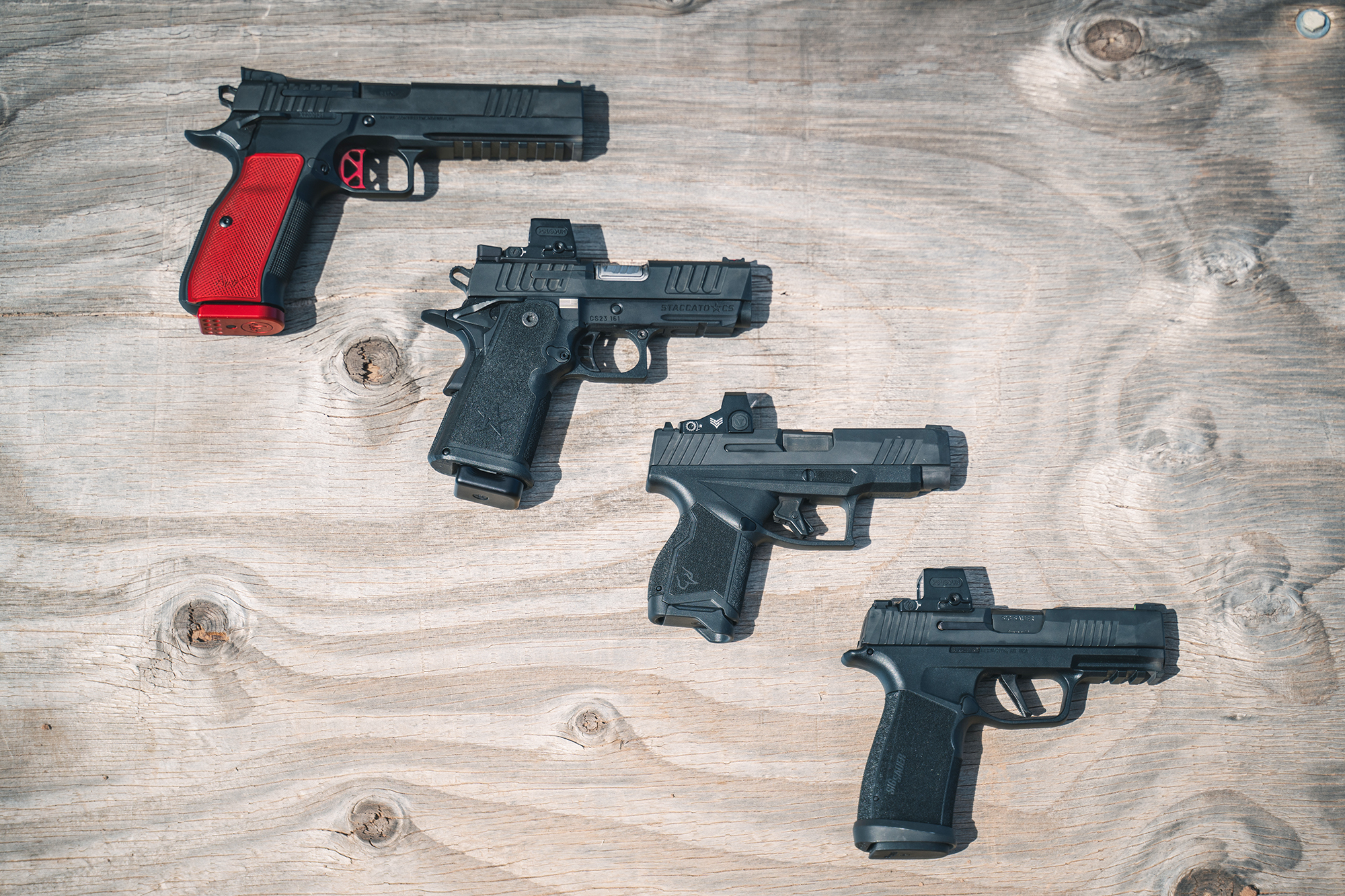
Sandwiched between the two was another excellent compact 9mm—the Sig P365 XMacro Tacops. Though it didn’t take home an award, it is still an outstanding handgun at $785. It was the consummate bridesmaid of this year’s test. Edged out by the Staccato as the Editor’s Choice and by the Taurus as a Great Buy, it is nonetheless a fabulous middle-of-the-road option. You can read Tyler Freel’s in-depth review of the P365 XMacro Tacops if you want to learn more.
Read Next: The Best 1911s, Tested and Reviewed
In addition to compact defensive pistols, we shot some impressive full-sized handguns. The Dan Wesson DWX instantly makes you a better shooter. It points like a dream, shoots flat, has great ergonomics, and is blessed with drop-dead looks. After reading that, would it shock you to learn that it is this year’s Editor’s Choice in the full-sized handgun category?
We had plenty of other interesting handguns in the field this year too. For more information on the winners listed here and the others, read on.
How We Tested the Best Handguns
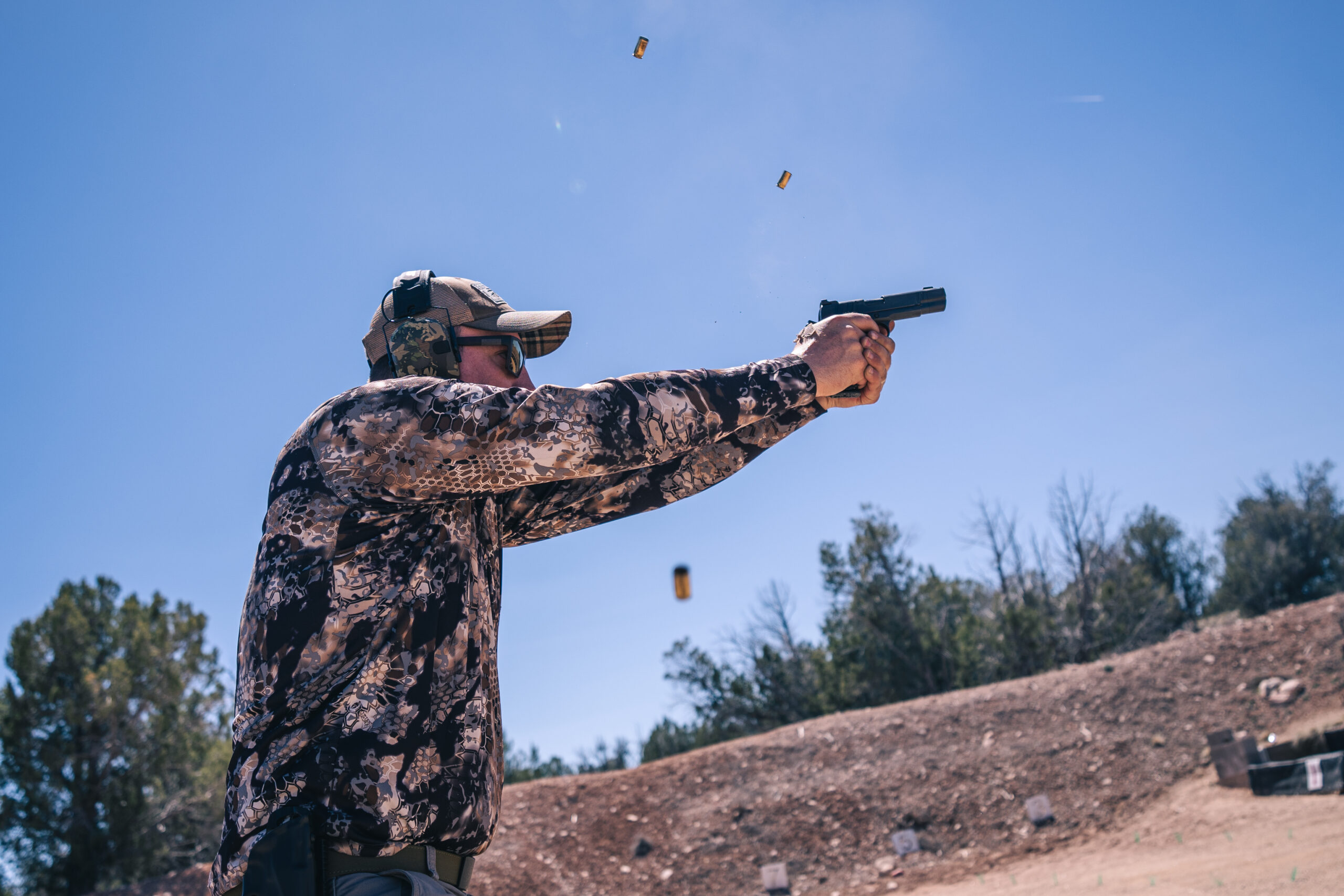
I’ve described our testing protocol countless times over the years, but it bears repeating. (Perhaps you’ve never come across our annual roundups of new guns before or maybe you’re one of those jaded readers who needs a reminder that not all gun reviews are influenced by the need to appease advertisers.)
As always, we gather a broad selection of the year’s new guns and pit them against each other in a head-to-head shootout. We have a panel of judges who score the guns independently. Once we’re finished with the shooting, we tabulate the results to calculate who won.

The guns with the highest overall scores earn our Editor’s Choice, while those that score highest on value get the Great Buy award. From time to time, we’ll give a special innovation award if a handgun, rifle, or shotgun merits it. One thing that’s unique about our test is that if we don’t feel the top-scoring gun merits an award, we will forego the winner in that category. That’s why we didn’t give out a Great Buy this year in the field of full-sized handguns.
We divide the shooting into two main categories: shooting for accuracy and practical field handling. To determine handgun accuracy we shoot at 15 yards supported on a tripod with a shooting bag. We shoot multiple 5-shot groups with a set selection of ammo spanning a variety of bullet types and weights. We then take the average of the 10 best groups and use that figure to determine the accuracy score.
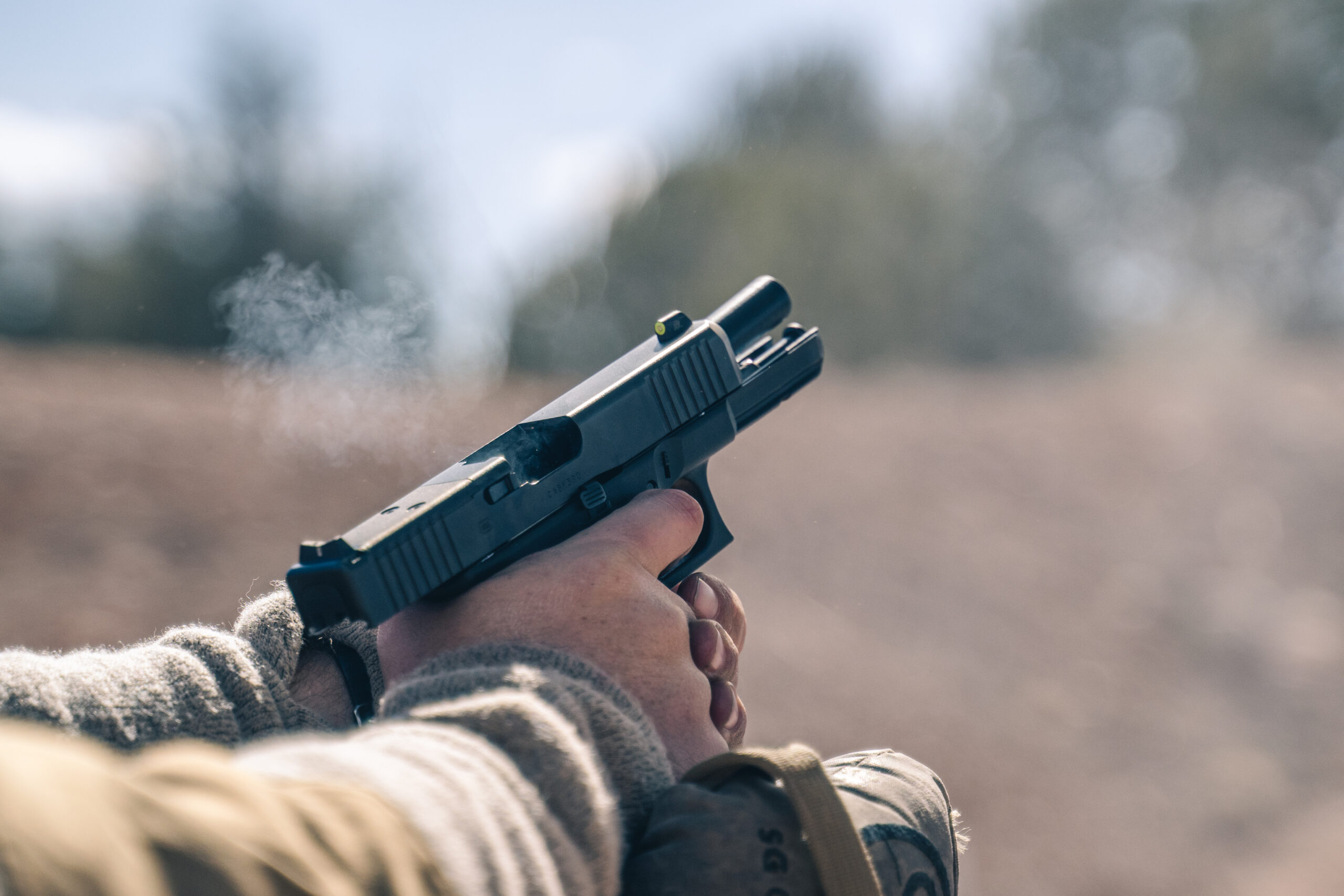
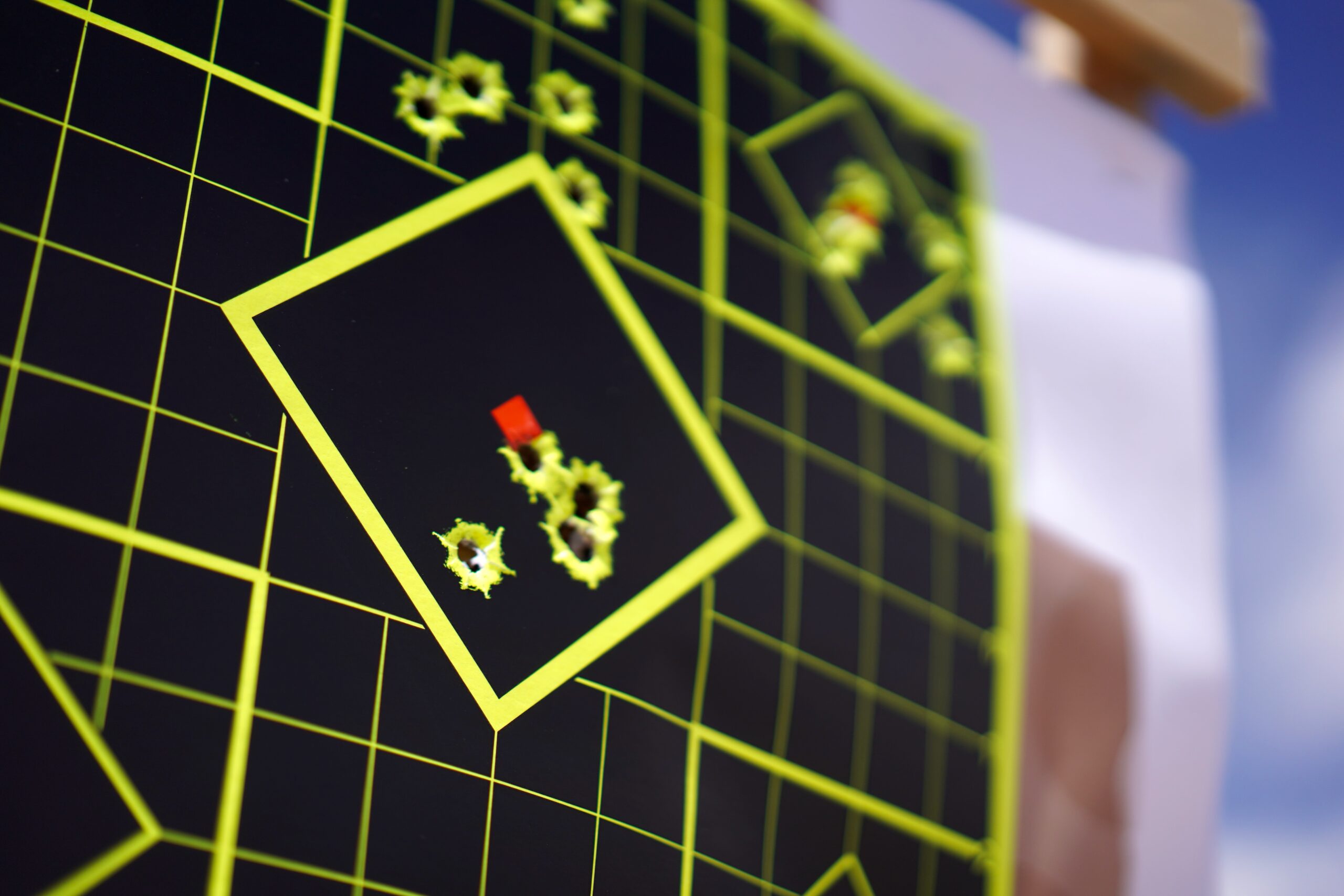
Once that chore is done (and after shooting 399 groups for accuracy, believe me when I say it is a chore) we switch to the fun trigger pulling. That entails a variety of drills on paper and steel—everything from Gunsite’s iconic paper target to poppers to plate racks to spinners.
This gives us the ability to assess the guns on a variety of qualities. Ergonomics, shootability, handling, reliability, aesthetics and so on. We go over the guns with a critical eye, noting their sterling qualities as well as their shortcomings.
The opportunity to shoot these pistols side by side offers a perspective that you just can’t get when evaluating them individually. We’re fortunate to be able to conduct our test this way, and to share the results with you.
How We Grade
Each handgun is evaluated in nine categories and given a score of 1 to 5 from each judge, except for the accuracy score, which is based on the data from the groups shot. We average the scores for each category and use that to determine the ranking and awards. The nine categories are handling, accuracy, workmanship, aesthetics, ergonomics, meets purpose, versatility, reliability, and value.
The scores then translate to the grades on the report cards for each firearm. Performance consists of the scores from handling, accuracy, ergonomics, and reliability. Design includes workmanship, aesthetics, meeting its purpose, and versatility. Value stands on its own.
To earn an “Excellent” rating, the average of that score must be 4.5 or higher, a difficult mark to hit. “Very Good” is an average score of 3.5 to 4.5; “Good” is from 2.5 to 3.5; “Fair” is from 1.5 to 2.5; and “Poor” is under 1.5.
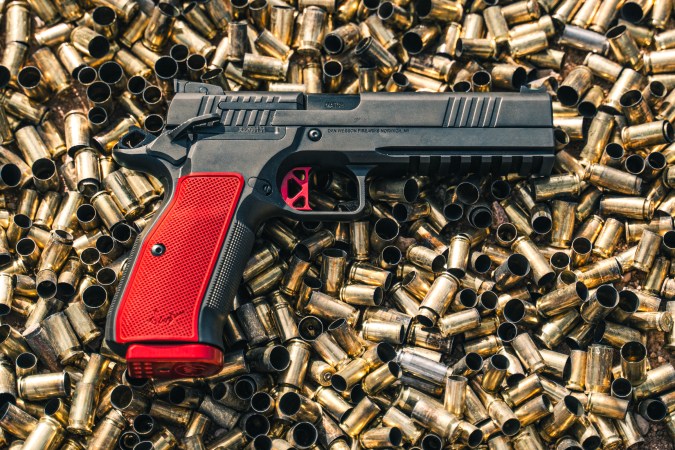
See It
Report Card
- Performance: Excellent
- Design: Very Good
- Value: Very Good
- Accuracy: 1.271 in. (Average of 10 best five-shot groups at 15 yards)
Dan Wesson DWX Specs
- Action: Single-action semi-auto
- Caliber: 9mm
- Capacity: 19+1
- Weight: 2 lb. 13 oz.
- Trigger: 3 lb. 11 oz.
- Barrel: 4.95 in.
- Length: 8.5 in.
- Price: $2,099
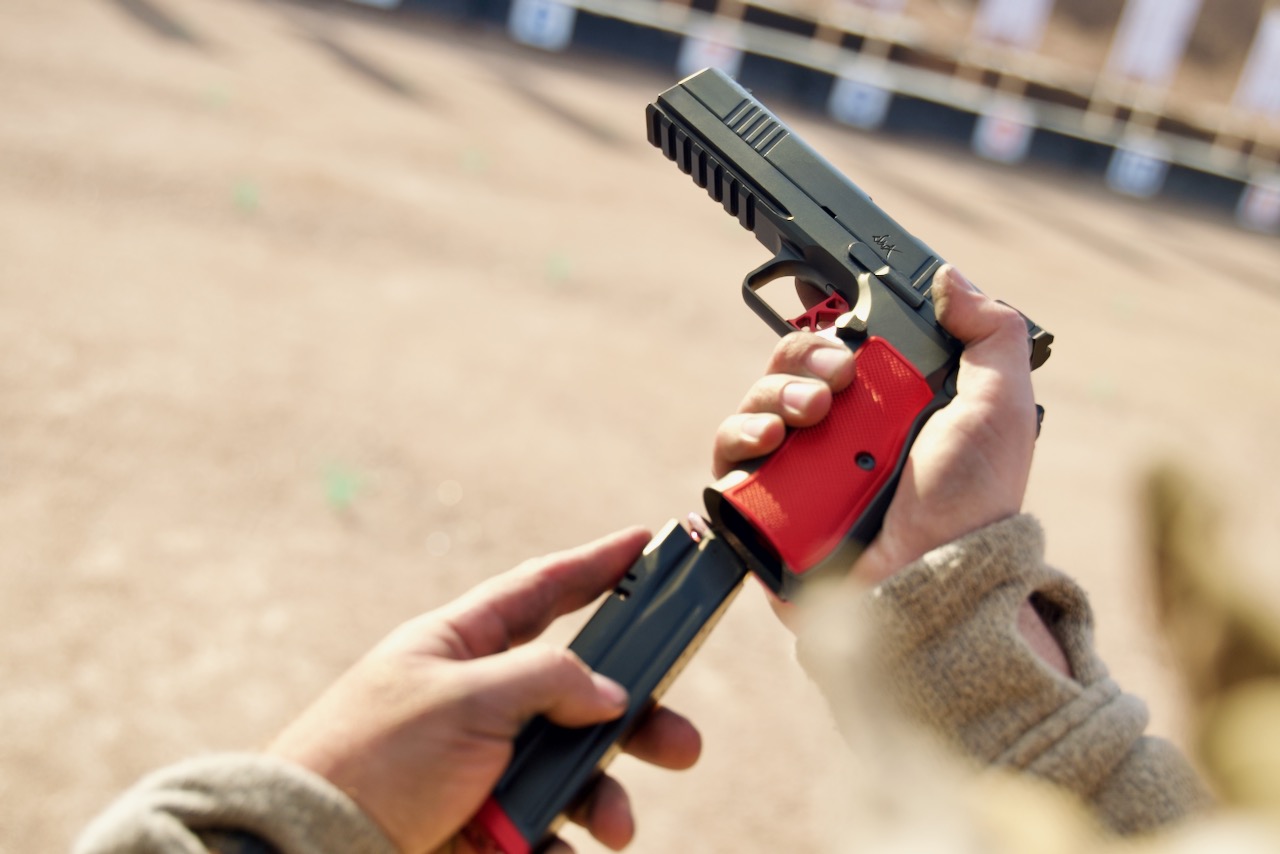
To appreciate all the thoughtful details that went into the design of the Dan Wesson DWX, take a look at Tyler Freel’s in-depth review. But the CliffsNotes version is that the DWX blends elements of 1911s, the CZ 75, and CZ’s P-10 striker-fired pistol in a masterly fashion.
The result is a flat-shooting and easy to control double-stack 9mm pistol that outshoots even highly accomplished competitive pistol shooters. It is a race car of a blaster that will keep you scrambling to get your hands on as much 9mm ammo as possible to keep it fed.
The DWX is single-action only and comes with an ambidextrous safety that 1911 shooters will find as comfortable as a favorite pair of shoes. There is no mush or need to apply excessive pressure to toggle between “safe” and “fire.” The proportions and contours of the safety are spot-on too. The safety is just one example of the bits and pieces that comprise the DWX to make it a winner.
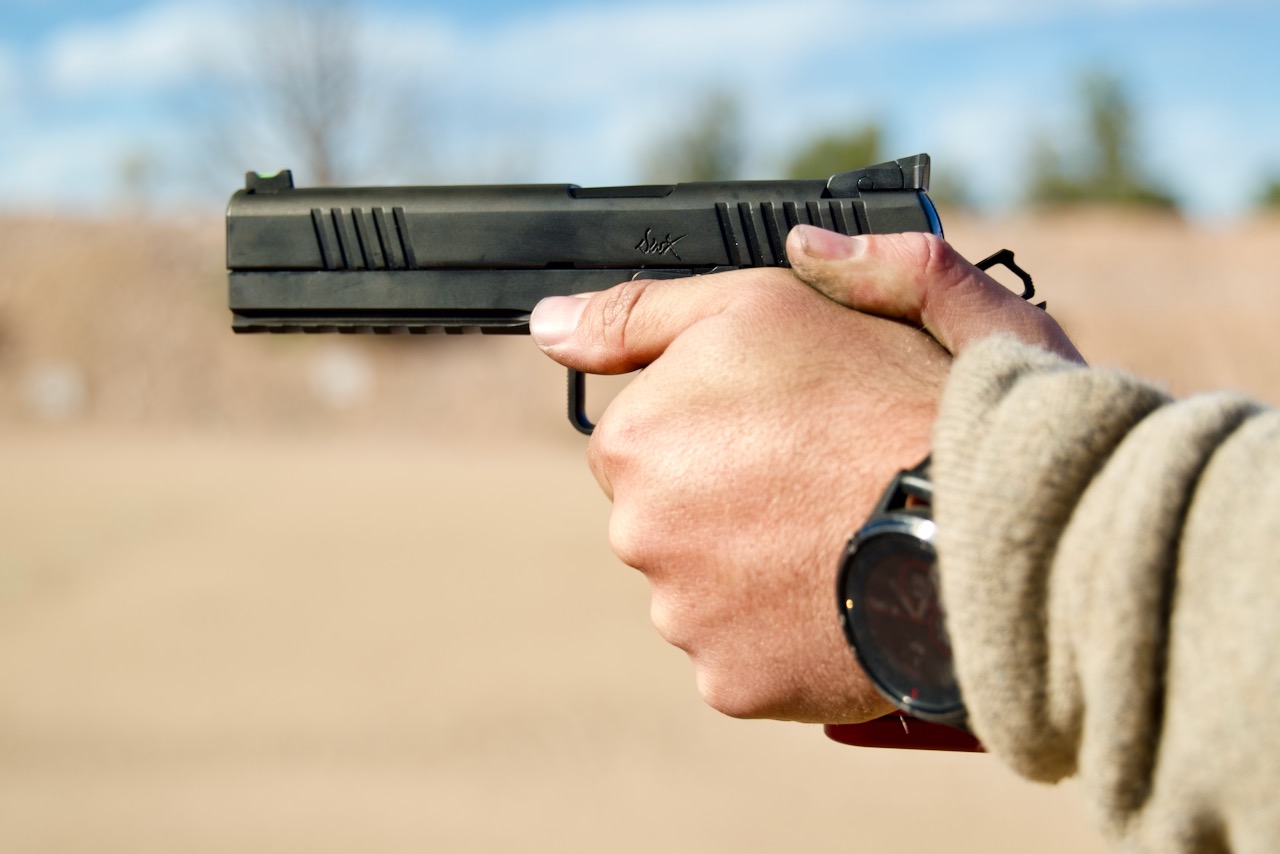
The flat-faced trigger is crisp. The oversized magazine release is easy to manipulate. The design of the magazines and magazine well make reloads a snap.
Its aesthetics are wonderful too. The machined aluminum grips—done in an eye-catching red—look as good as they perform. Even the hammer, which is skeletonized with a cool angular shape that compliments the rest of the gun’s looks, augments the pistol’s wow-factor.
Really, there’s nothing we could find fault on with this handgun. Its accuracy was excellent as well, averaging 1.271 inch 5-shot groups at 15 yards. Taken together, it isn’t difficult to understand why the Dan Wesson DWX won an Editor’s Choice award.
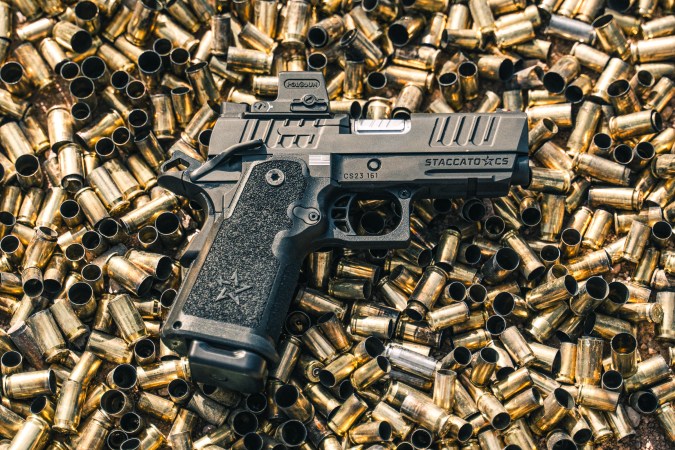
See It
Report Card
- Performance: Excellent
- Design: Very Good
- Value: Very Good
- Accuracy: 1.439 in. (Average of 10 best five-shot groups at 15 yards)
Staccato 2011 CS Specs
- Action: Single-action semi-auto
- Caliber: 9mm
- Capacity: 16+1
- Weight: 1 lb. 11 oz.
- Trigger: 4 lb. 7 oz.
- Barrel: 3.5 in.
- Length: 7 in.
- Price: $2,499
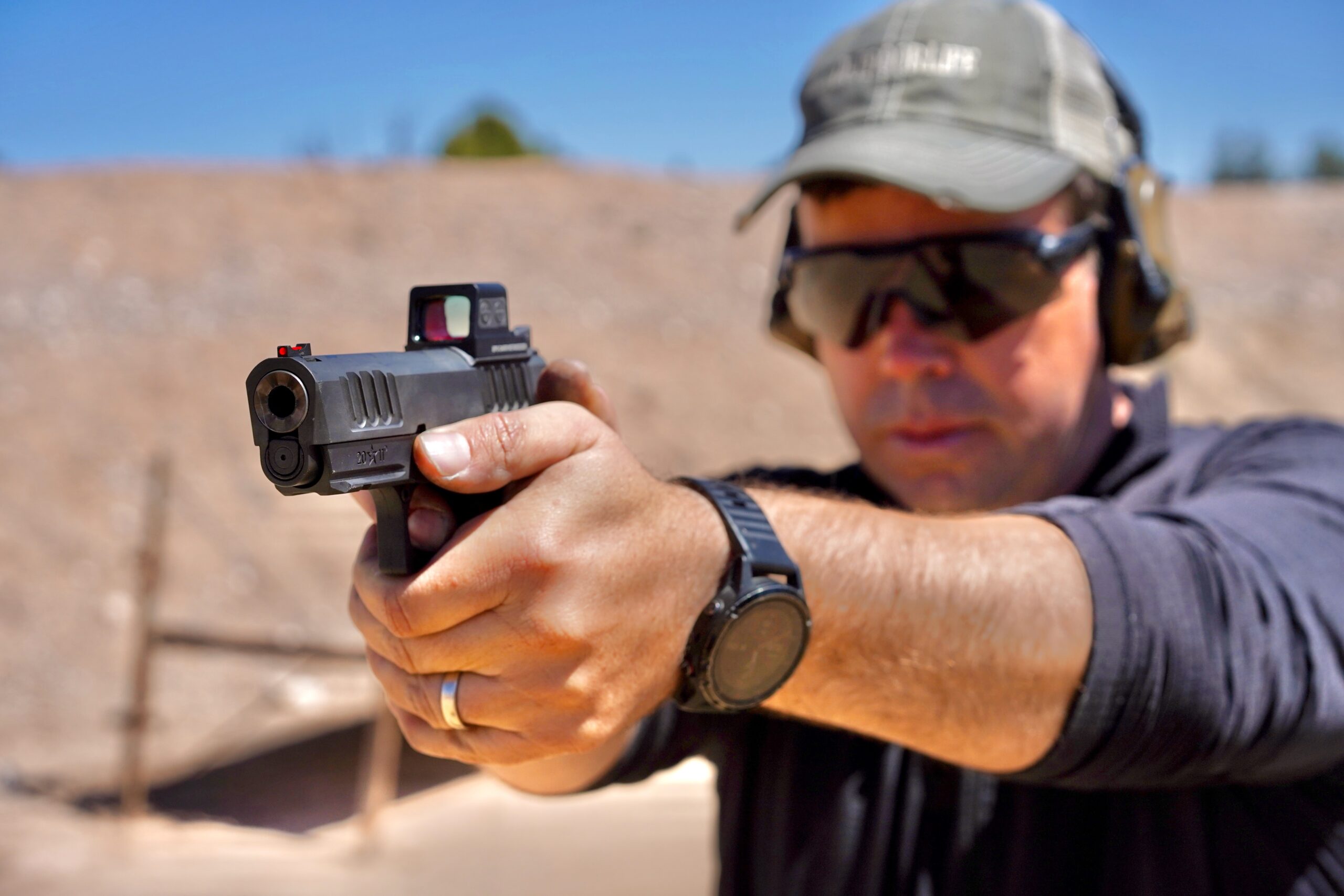
There are so many good defensive pistols on the market—some of which can be had for a song—that you can understand why some people might be skeptical concerning the benefits of the Staccato 2011 CS, which sports a hefty $2,499 price tag.
That was certainly at the forefront of our mind before we started putting lead downrange at this year’s gun test. Very quickly, however, the CS began to distinguish itself in the competitive field of compact 9mm carry guns.
Everything on the gun runs well. The magazines, which hold 16 rounds, are intelligently designed. All the controls—mag release, slide lock, ambidextrous safety—are positive and intuitive to use. The stippled grip texture is, in the words of one judge, “perfect.”
The trigger has minimal take-up (which you’d never notice in a defensive situation), a crisp break, and a short reset. The Staccato 2011 CS also has an innovative dual-spring recoil system that’s unlike anything you’ve seen on a 1911, 2011 or striker-fired pistol. (Check out our full review if you want to really get into the weeds with the CS.)
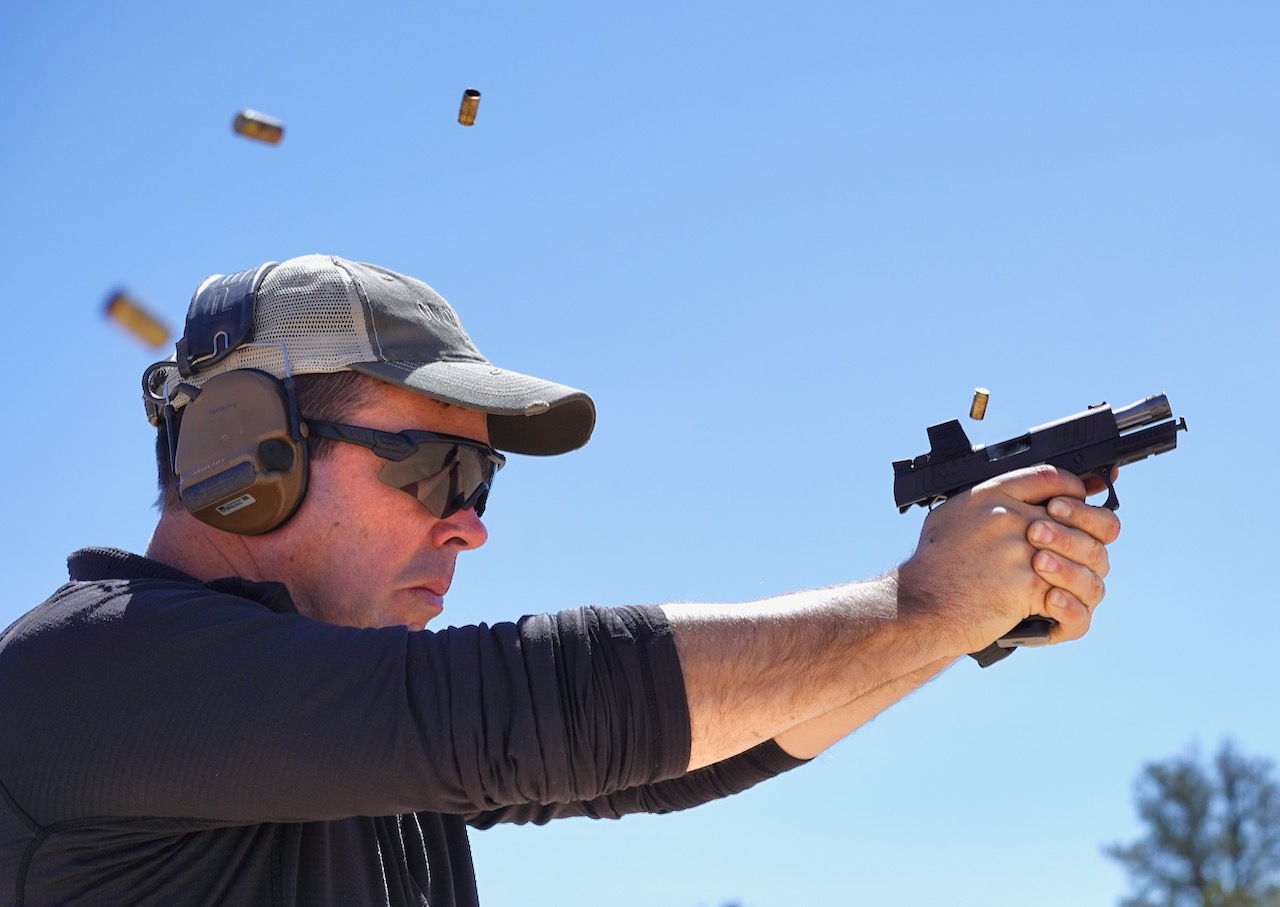
Bottom line, for its size you won’t find another pistol that combines speed and accuracy the way the Staccato CS does. Its 1.439-inch accuracy average placed it right in the midst of what the best full-sized pistols we tested this year shot. And with a reflex sight mounted (ours carried a Holosun EPS Carry 2), we were able to run it like a sport bike on an empty highway.
All this isn’t to say the pistol is perfect. The faint line on the polymer frame left over from the injection molding process is a minor cosmetic blemish. Also, the 2011-style controls add bulk and complexity to the pistol. The slimmer dimensions of striker-fired pistols that lack external safeties, and their simple “point and shoot” operation, account for much of their popularity.
A shooter opting to go with any pistol like the CS for a carry gun really needs to take the time to master the platform so that running the gun is second nature under stress. Anyone willing to make that commitment, however, will enjoy this pistol and soon see why it deserved an Editor’s Choice award as the best compact pistol of 2023.
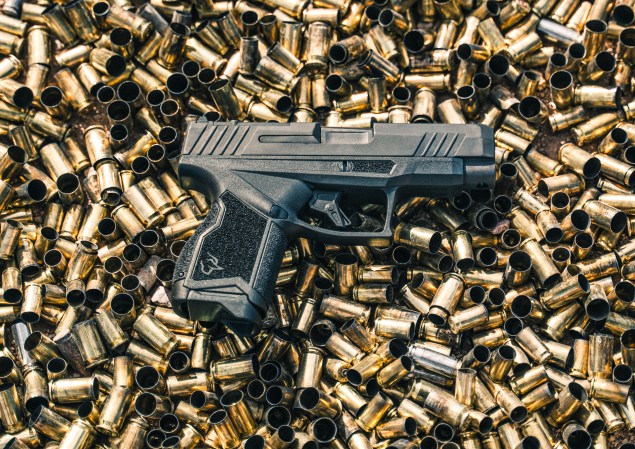
See It
Report Card
- Performance: Good
- Design: Good
- Value: Excellent
- Accuracy: 2.929 in. (Average of 10 best five-shot groups at 15 yards)
Taurus GX4XL T.O.R.O. Specs
- Action: Semi-auto striker
- Caliber: 9mm
- Capacity: 13+1 / 11+1
- Weight: 1 lb. 4 oz.
- Trigger: 6 lb. 11 oz.
- Barrel: 3.71 in.
- Length: 6.5 in.
- Price: $430
For anyone who recoiled at the price of the Editor’s Choice award winners, there’s the Taurus GX4XL T.O.R.O. This Brazilian-made striker-fired semi-auto is a screaming value for shooters looking for a compact 9mm.
While the $430 price tag might be what catches the eye of most people first, this little gun revealed it’s more than just a cheap date after we put hundreds of rounds through it during the test.
Most importantly, it shot well during the dynamic portion of our testing. That means during strings of rapid fire on multiple targets at different distances, the Taurus GX4XL more than met the standard expected for a concealable defensive pistol. (In terms of pure accuracy it didn’t blow our socks off, but it’s not meant for bullseye competition.)
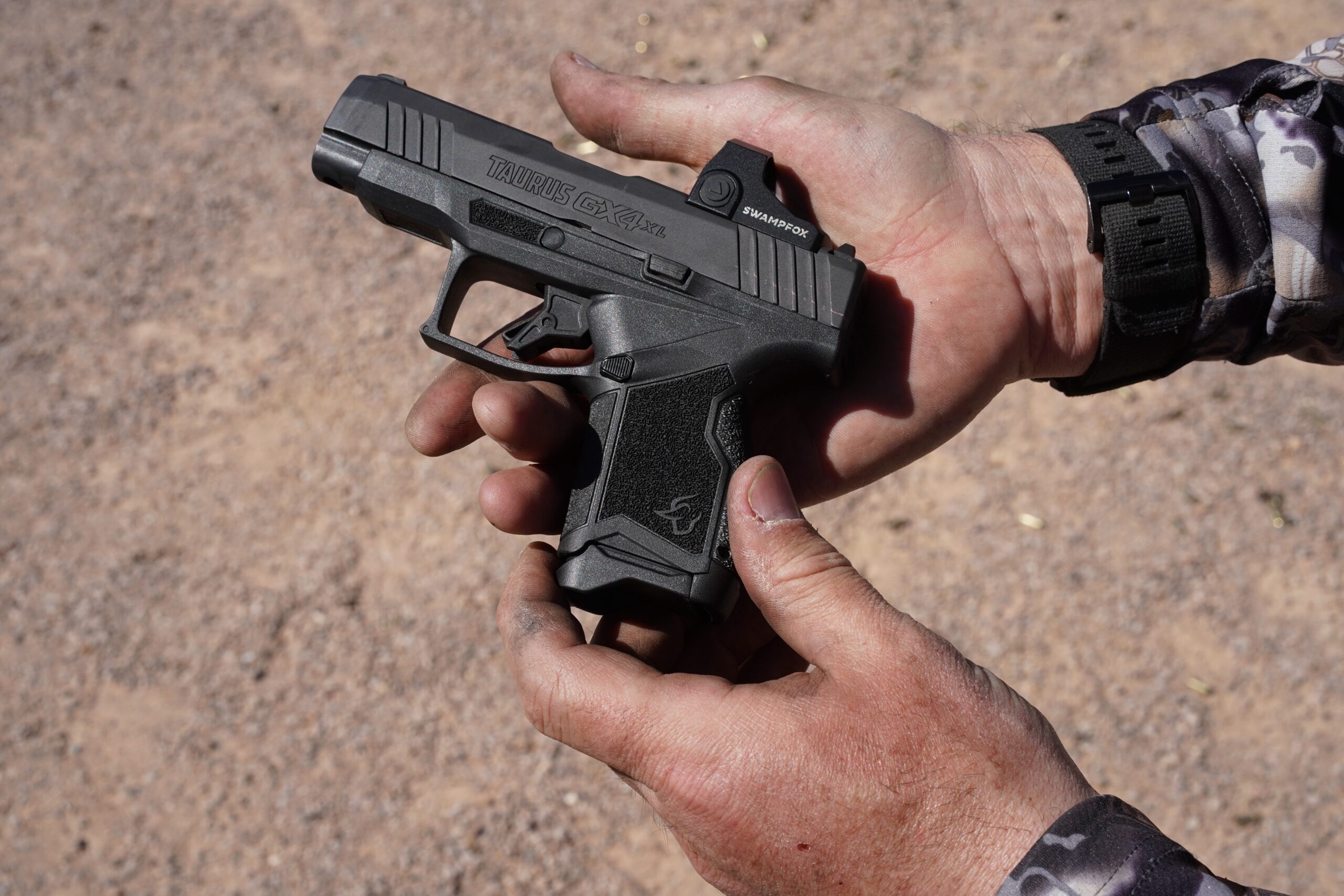
Its reliability was good as well. We didn’t have any issues running a variety of bullet styles and weights through it. Though, in fairness, this is actually the second sample of this pistol we tested and that first pistol required a couple hundred rounds of break-in before its feeding smoothed out. As with any handgun—especially less expensive defensive pistols—it is imperative to get an adequate quantity of rounds through them before potentially staking your life on their performance. If you want to read more about this pistol, read our full review.
Among the pistol’s positive qualities are an excellent grip shape and texture. We especially appreciated the textured pad on the side of the frame for the support hand thumb. These enhanced the Taurus’s ergonomics and contributed to its ability to get back on target quickly.
The trigger breaks at 6 pounds, 11 ounces—which is more than ideal—but it has a solid back wall, and a short, well-defined reset which helps make up for that.
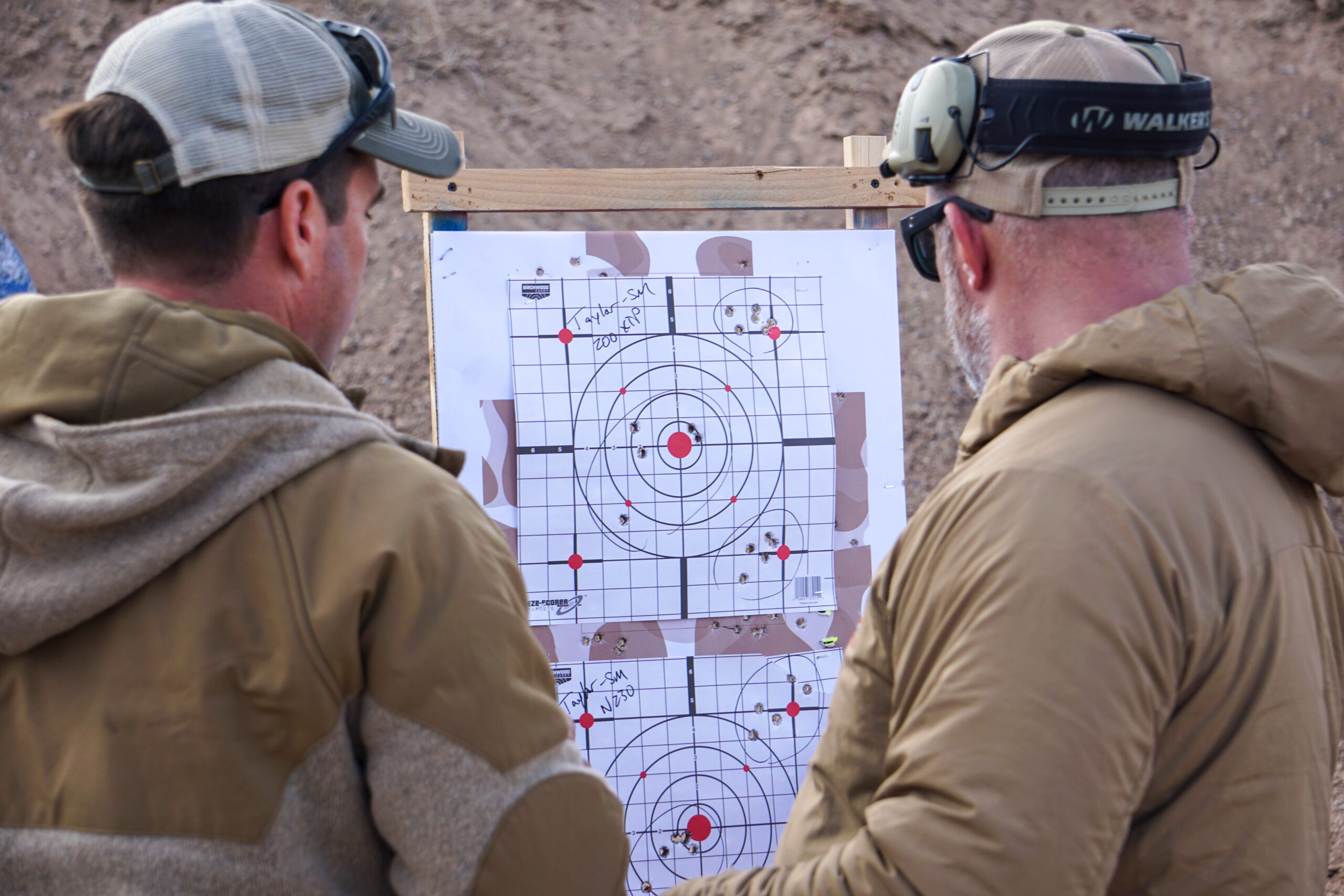
The T.O.R.O. is optics-ready, and after running it with its stock fixed sights (which are one of the pistol’s deficits), we put on a Swampfox Sentinel reflex sight. That was a worthwhile upgrade and gave the GX4XL a good performance boost.
The pistol comes with two magazines, one holding 11 rounds and the other 13. Even the shorter 11-rounder offers purchase for all the shooter’s fingers. The pistol also ships with different backstraps to adjust the thickness of the grip.
These standard features are really attractive on a pistol at this price and sealed the deal for the Taurus GX4XL’s well-deserved Great Buy award.

See It
Report Card
- Performance: Very Good
- Design: Very Good
- Value: Excellent
- Accuracy: 2.135 in. (Average of 10 best five-shot groups at 15 yards)
Sig Sauer P365 XMacro Tacops Specs
- Action: Semi-auto striker
- Caliber: 9mm
- Capacity: 17+1
- Weight: 1 lb. 6 oz.
- Trigger: 5 lb. 6 oz.
- Barrel: 3.7 in.
- Length: 6.6 in.
- Price: $785
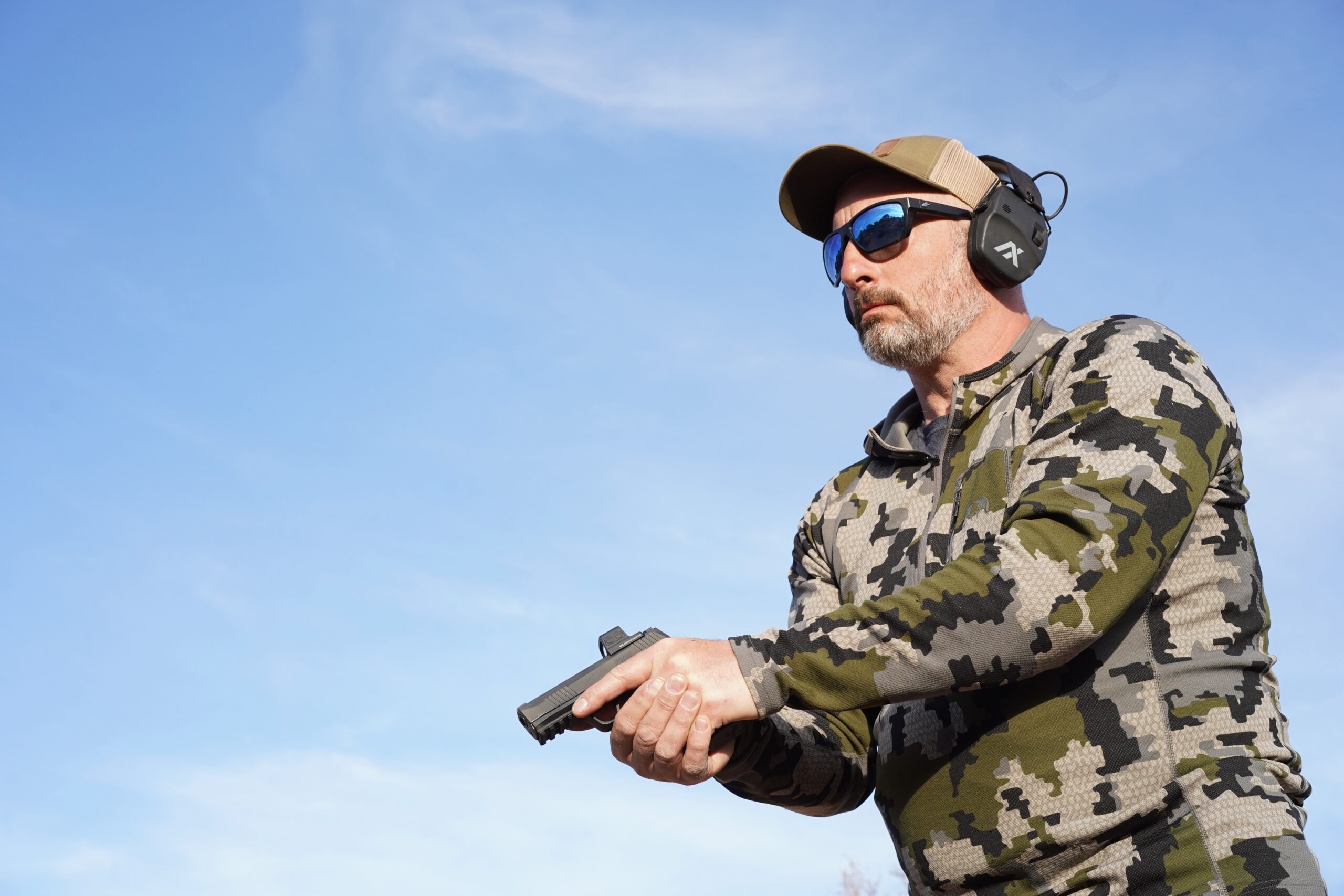
Don’t let the lack of an award for the Sig Sauer P365 XMacro Tacops fool you. Though it took second place in the scoring for the Editor’s Choice and Great Buy awards in the compact pistol category, it is a true winner.
For a mid-priced gun, the $785 XMacro Tacops has a solid and appealing feature set. Of course, it is built on the proven (and often imitated) P365 platform, so the pistol starts with a good foundation.
To differentiate it from the ever-expanding field of P365s, Sig gave the XMacro Tacops a larger grip module that bumped it from the micro-compact category and into the compact field, where it competes against the G19/G47 as well as Sig’s own P320 Compact.
The XMacro Tacops boasts an impressive 17-round magazine capacity, despite its slender profile. Sig also built it with a three-slot accessory rail in front of the trigger guard and, as one would expect, the slide is cut to mount a red-dot optic.
The factory sights that come with the pistol are very good. They gave a crisp sight picture during our accuracy testing, but also included tritium inserts for use in low light.
Read Next: Types of Pistols, A Beginner’s Guide
The ergonomics of the P365 have garnered lots of praise over the years and the XMacro Tacops, by virtue of its extra grip length, is the most comfy P365 to date. The grip geometry and design of the recoil system make it particularly soft shooting for a compact 9mm.
The mag well on the gun isn’t overly large but is flared enough so that the magazines seem to slide home of their own volition.
The only real element on the gun we’d like to see improved is the trigger. The 5-pound, 6-ounce break weight isn’t bad for a striker-fired carry gun, but it does have a lot of mush in the trigger pull. It didn’t hold us back from shooting the pistol well during our speed drills, but a crisper trigger would take what is undeniable a very good gun and make it even better.
For more on the XMacro Tacops, check out Tyler Freel’s in-depth review as well.
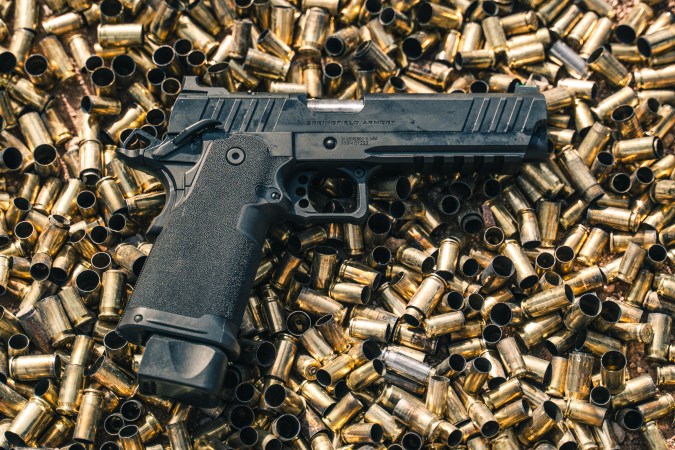
See It
Report Card
- Performance: Very Good
- Design: Very Good
- Value: Very Good
- Accuracy: 1.306 in. (Average of 10 best five-shot groups at 15 yards)
Springfield Armory 1911 DS Prodigy Specs
- Action: Single-action semi-auto
- Caliber: 9mm
- Capacity: 20+1 / 17+1
- Weight: 2 lb. 8 oz.
- Trigger: 4 lb. 10 oz.
- Barrel: 5 in.
- Length: 8.5 in.
- Price: $1,499
The Springfield Armory 1911 DS is a beefy double-stack 9mm that does a great job putting lots of bullets on target quickly. It has 1911-style controls and a five-inch barrel, and comes with two magazines: one that holds 17 rounds and another that holds 20.
In terms of pure handling the DS Prodigy earned some of the highest scores in the test and, for a competition-oriented gun, we also found it to be an outstanding value.
Aesthetically it isn’t as refined as other high-end double-stack 9s—it doesn’t have the same visual impact of the Dan Wesson DWX or a Staccato 2011 XC. But the more we shot the Prodigy the more we liked it.
The action is very smooth, the trigger crisp, and the bright-green fiber-optic front sight barely strays from the target under recoil allowing for fast, accurate fire. The Prodigy is also cut for optics, so after shooting it in stock trim for a couple days, we mounted a USO DRS 2.0 to its slide and continued to blaze away. With the red dot aboard we found the pistol even more biddable.
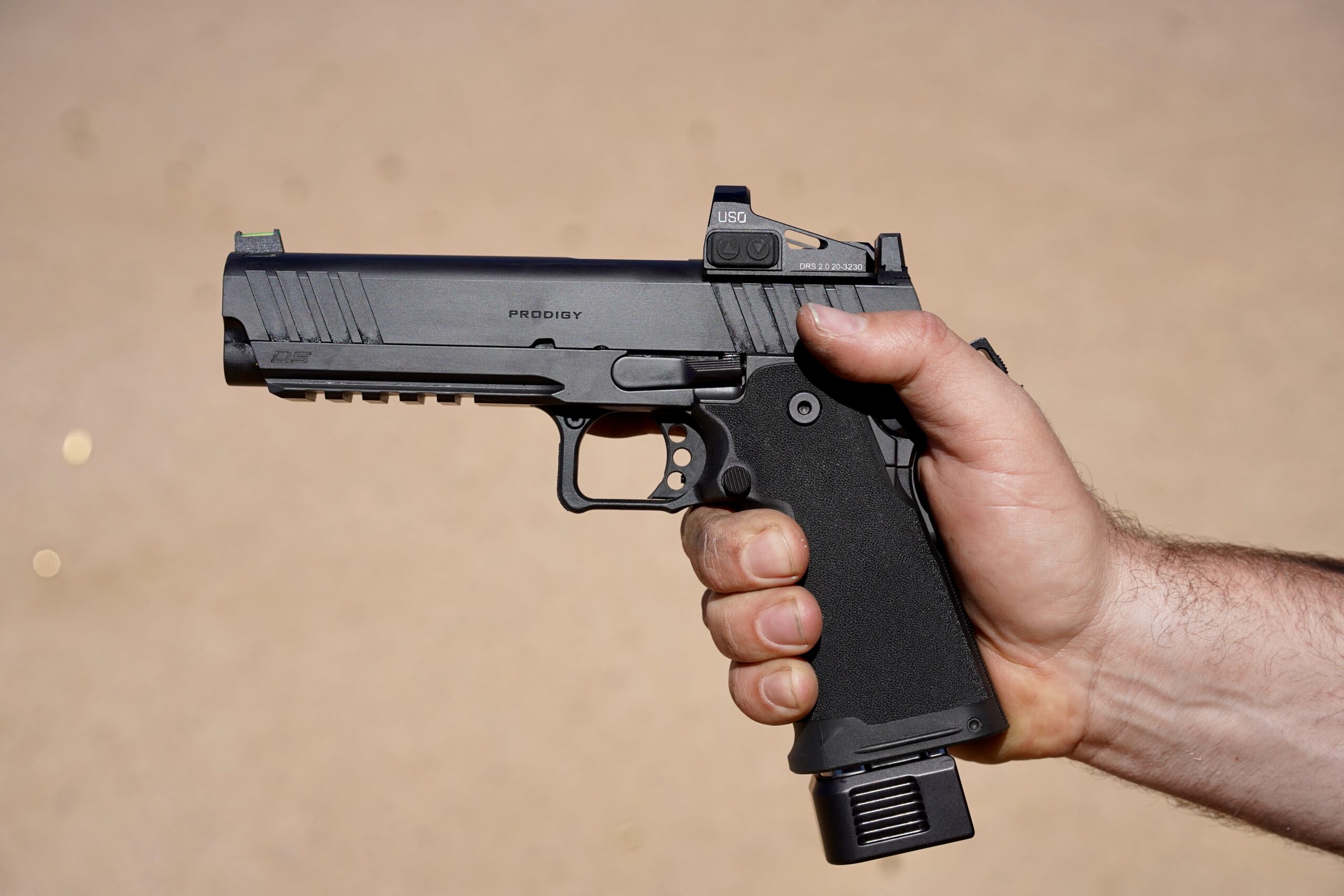
The grip on the Prodigy is noticeably thick—a necessary by-product to accommodate its magazines and a frame/grip assembly that incorporates a 1911-type grip safety. But the texturing on the side panels and the crosshatch checkering on the backstrap offer a rock-solid hold on the gun.
The bottom of the trigger guard is undercut where it meets the grip and the portion of the grip where the middle finger of the trigger hand is smooth. This helps the shooter get a high hand position that is comfortable to maintain. You can shoot the Prodigy all day long without undue fatigue.
The dust cover extends the full length of the slide and has five cross slots machined into it for mounting accessories. The slide has thick and deep cocking serrations cut at an angle fore and aft for easy manipulation. Together these two features really cement the Prodigy’s look and vibe as a no-nonsense shooter. Our full review of the Prodigy has more details you might find of interest.
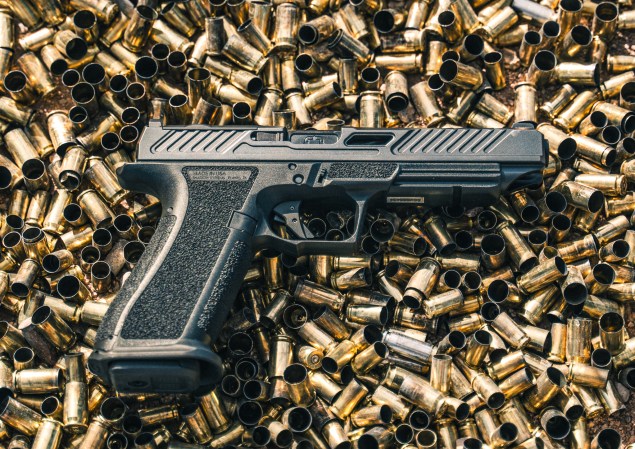
See It
Report Card
- Performance: Very Good
- Design: Very Good
- Value: Good
- Accuracy: 2.349 in. (Average of 10 best five-shot groups at 15 yards)
Shadow Systems DR920 L Specs
- Action: Semi-auto striker
- Caliber: 9mm
- Capacity: 17+1
- Weight: 1 lb. 8 oz.
- Trigger: 5 lb. 3 oz.
- Barrel: 5.3 in.
- Length: 8.75 in.
- Price: $1,175
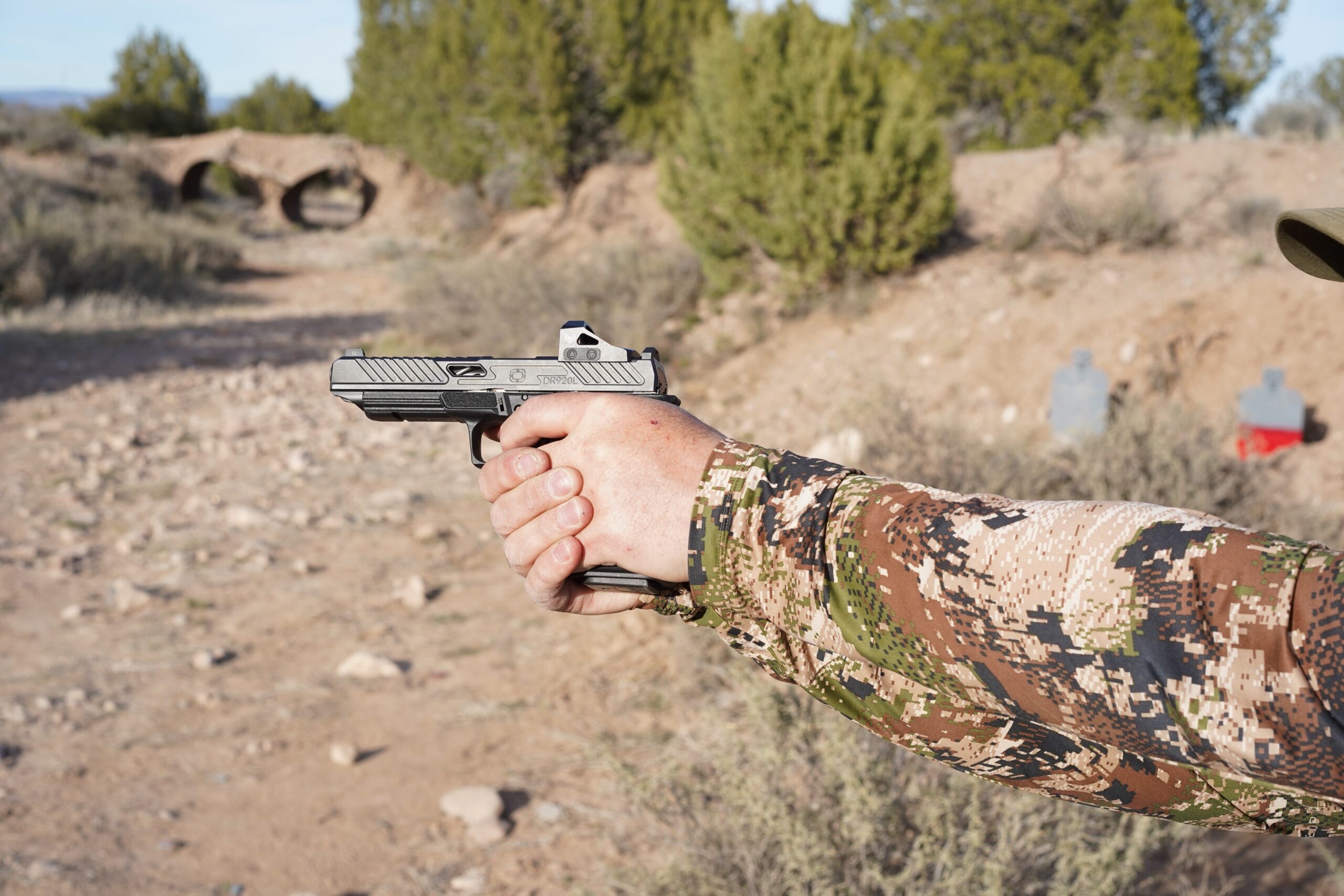
Shadow System’s business model is to take the most popular striker-fired pistol on the planet—the ubiquitous Glock—and make it better. Over the decades the Glock aftermarket industry has exploded as shooters have sought to address the shortcomings (real or perceived) and monotonous sameness of the Austrian plastic wonderguns.
Shadow System does all that work for you with eye-catching upgrades that trim weight and improve handling, balance, and performance.
The DR920 L, which is new this year, is our favorite Shadow Systems pistol to date. It weighs the same (or less than) many compact 9mms but comes with a 5.3-inch barrel that gives it a generous sight radius and the improved recoil management that a longer barrel brings.
The pronounced beavertail on the grip, the deep (and attractive) sculpting around the trigger guard, and the addition of fine-grained stippling all around the grip and on thumb-patches on the front of the frame all go a long way to improving the handling of the pistol.
Like all other Shadow Systems pistols, the fixed sights—that consist of the bold fiber optic/night front sight and basic, but good, rear sight from XS Sights—are a major improvement over the stock Glock offerings.
We scored this pistol very high for its design elements. The deep cuts made to the slide—including jaunty cocking serrations, an exposed port just in front of the chamber, and ratchet pattern machined into the slide’s top—give the DR920L a high-speed, low-drag look, though it might come across as too John Wick for some.
On the more practical side, the single-slot accessory rail and heavily-flared mag well are nice features too. The trigger on our sample was pretty good, with a fairly crisp break for pistols of this type.
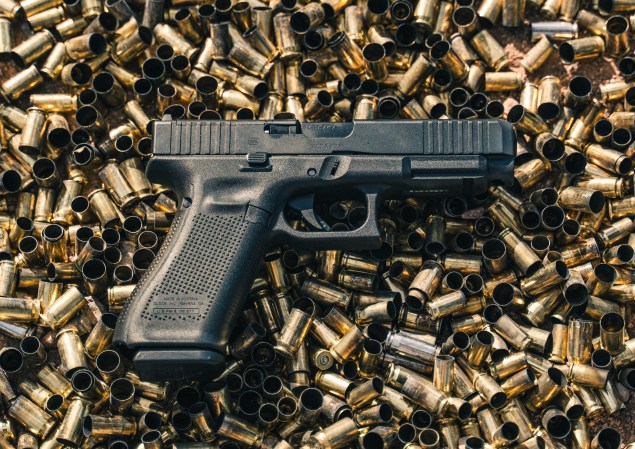
See It
Report Card
- Performance: Very Good
- Design: Very Good
- Value: Very Good
- Accuracy: 1.633 in. (Average of 10 best five-shot groups at 15 yards)
Glock G47 MOS Specs
- Action: Semi-auto striker
- Caliber: 9mm
- Capacity: 17+1
- Weight: 1 lb. 7 oz.
- Trigger: 6 lb. 8 oz.
- Barrel: 4.49 in.
- Length: 8 in.
- Price: $745
The judges on the Outdoor Life gun test team have more experience with Glocks than any other type of handgun—many decades worth. We’ve carried them for self-defense, shot them in competition, hunted with them, and relied on them for protection in the backcountry from bears and other potentially aggressive critters.
So nothing about the new G47 caught us by surprise or radically altered our perception of the pioneer of polymer-framed striker-fired pistols.
The G47 MOS is another solid introduction by the company. Probably the most significant thing about it is that it represents the phasing out of the Glock G17, the original pistol that started it all for this Austrian firearms company.
We’ve written about the Glock G47 MOS at length, and have explained how it fits into the wider world of Glock pistols, but it was illuminating to shoot it in this year’s gun test against a field of other new handguns.
One thing we noted was that it was more accurate than other Glocks we tested. Its 1.633-inch 5-shot group average placed it in the top third of all the handguns we shot this year (I’m including the 1911s we’ll be reviewing in a separate story) and was the most accurate gun in its price class by a fair margin. That includes outshooting the Shadow System 920L, a Glock clone that—in theory—should be more accurate than a stock Glock offering.
Beyond that the G47 MOS shot like a Glock, pointed like a Glock, has the same uninspiring factory sights as other Glocks, and was as utterly reliable as a Glock.
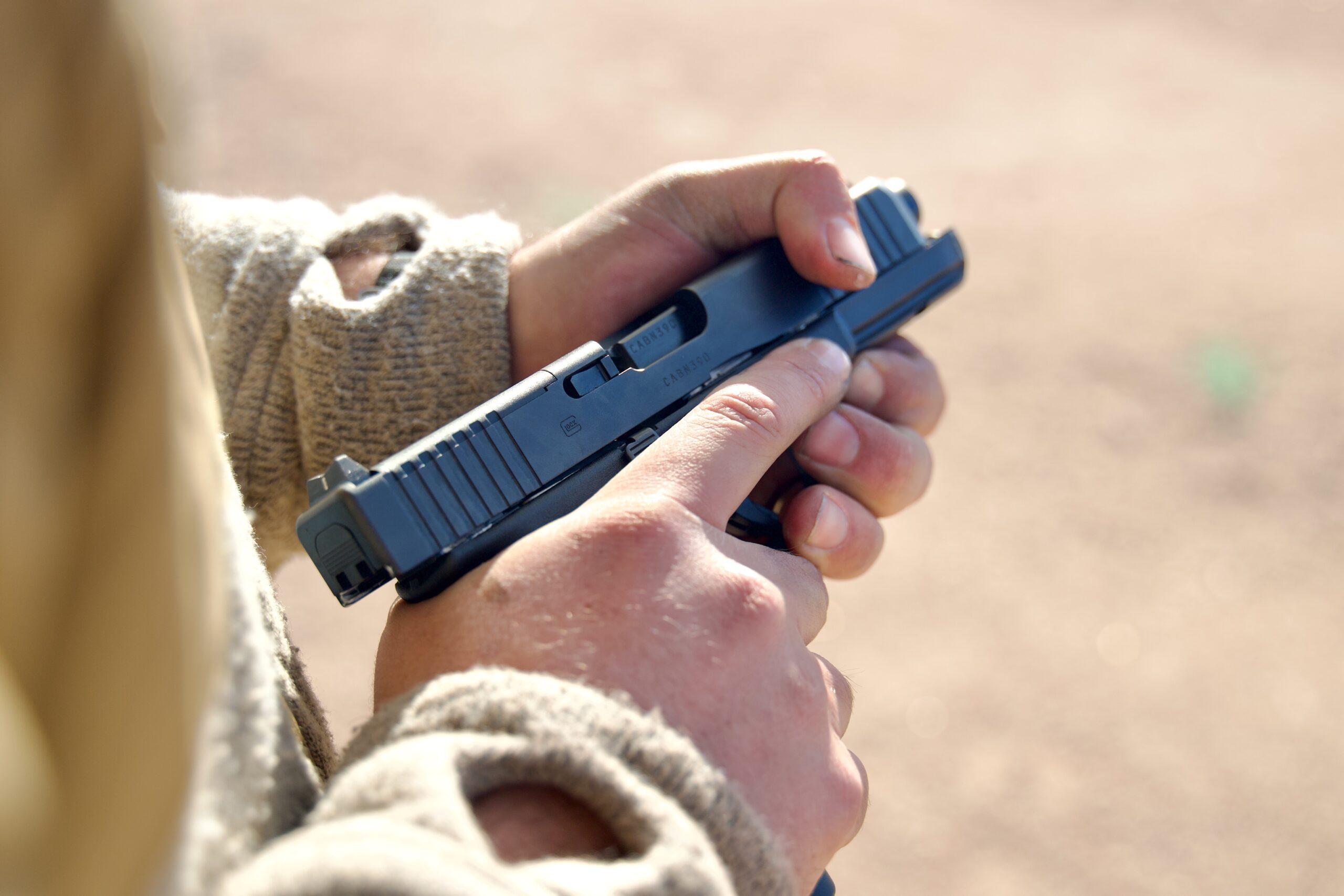
The G47 MOS is optics-ready, of course, and has other nice Gen 5 features, including an ambidextrous slide release, no finger grooves on the grip, the captured recoil spring, the improved trigger module, reversible mag release, and the Glock Marksman barrel.
In terms of its specific construction, the G47 MOS is a full-sized pistol with a 4.49-inch barrel and slide cut to fit on G19 rails. In theory, this will allow you to create a long-slide G19 by running the G47 slide on a G19 frame.
While there’s nothing especially ground-breaking about the Glock G47 MOS, it helps keep the Glock platform up to date and relevant with the needs of modern shooters.
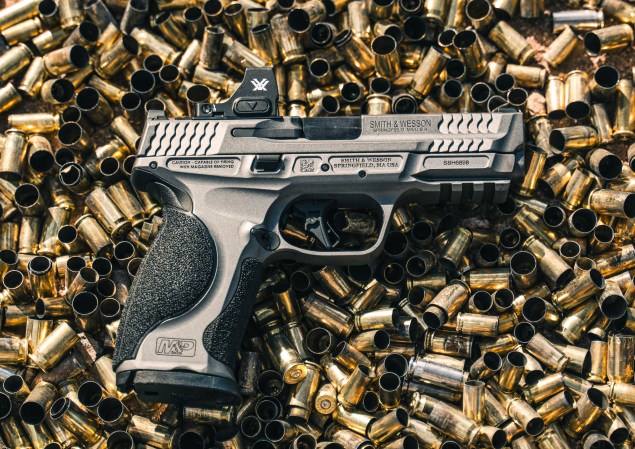
See It
Report Card
- Performance: Very Good
- Design: Good
- Value: Very Good
- Accuracy: 1.77 in. (Average of 10 best five-shot groups at 15 yards)
Smith & Wesson M&P 9 2.0 Metal Specs
- Action: Semi-auto striker
- Caliber: 9mm
- Capacity: 17+1
- Weight: 1 lb. 14 oz.
- Trigger: 4 lb. 8 oz.
- Barrel: 4.25 in.
- Length: 7.4 in.
- Price: $899
One of the most revealing aspects of this year’s gun test was putting the Smith & Wesson M&P 9 2.0 Metal through the paces. I’ve had a lot of trigger time with M&P 2.0 pistols built on polymer frames: I shot a Pro Series in competition for many years and used a M&P 2.0 as my primary carry gun for a few years after transitioning from a Glock G23.
So experiencing the familiar M&P 2.0 pistol built on a frame using new material was eye opening. While going with metal obviously adds weight, the rigidity that steel brings to the party and the sensation of improved strength and stability was remarkable. It raised my opinion of what the M&P platform is capable of.
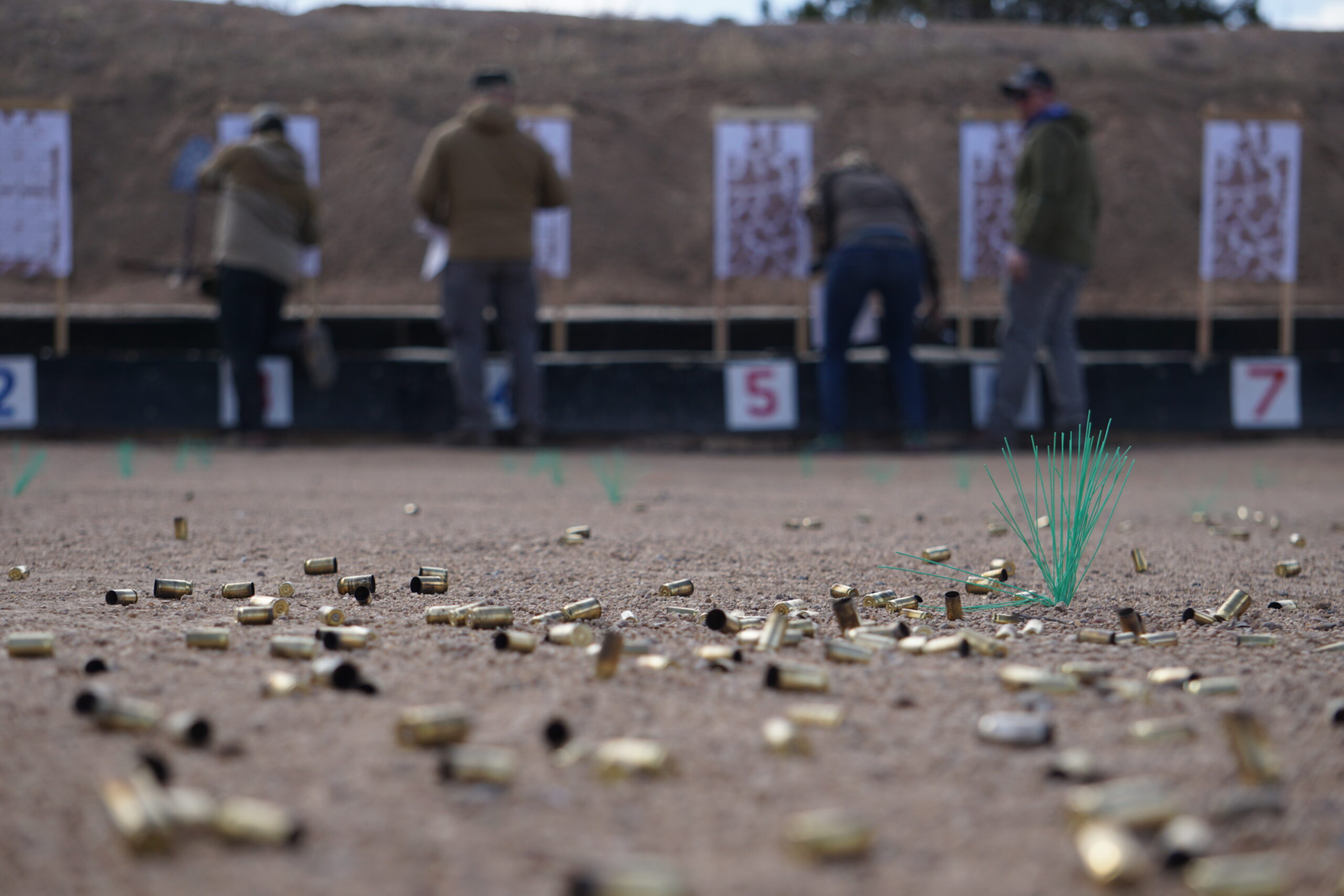
From the standpoint of accuracy, our sample shot some types of ammo better than others, so if you opt to get one, it’ll pay dividends to try a range of bullet styles and weights to achieve peak performance. In terms of basic reliability, however, the pistol did great. We didn’t record any malfunctions or other issues.
The overall look of the pistol didn’t impress us, however. The grip inserts on ours looked “janky” according to one judge, though we did like the quality of the metalwork on the grip.
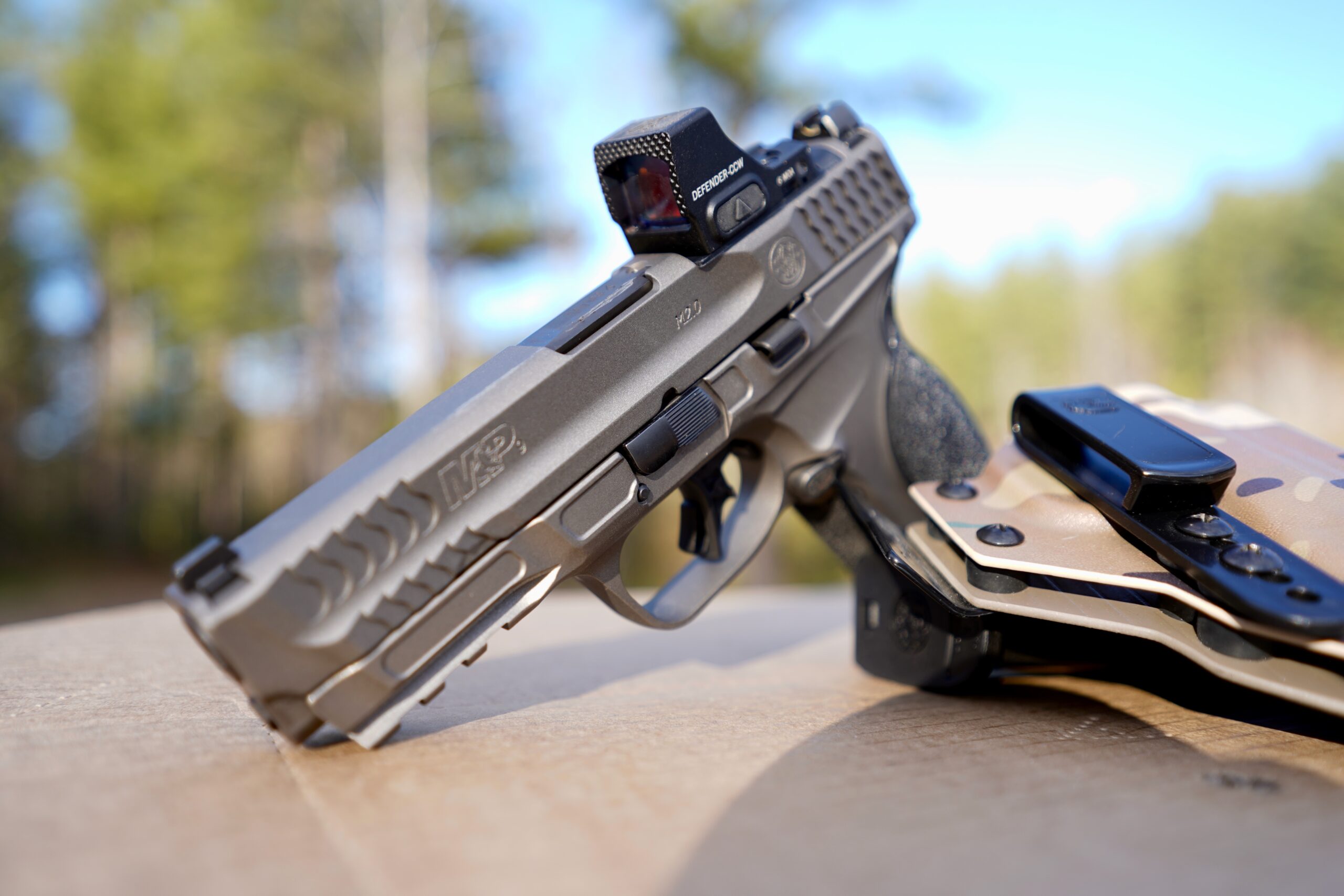
It has a decent trigger on it, comes with four different grip inserts to tailor the fit to your hand, has scalloped-pattern slide serrations on the front and rear, and a three-slot Picatinny rail on the frame. The magazine catch can be swapped to the other side and the slide is cut to accept optics.
So what it lacks in drop-dead looks it makes up for with a rich feature set that places it near the head of its class compared to other pistols in its category.
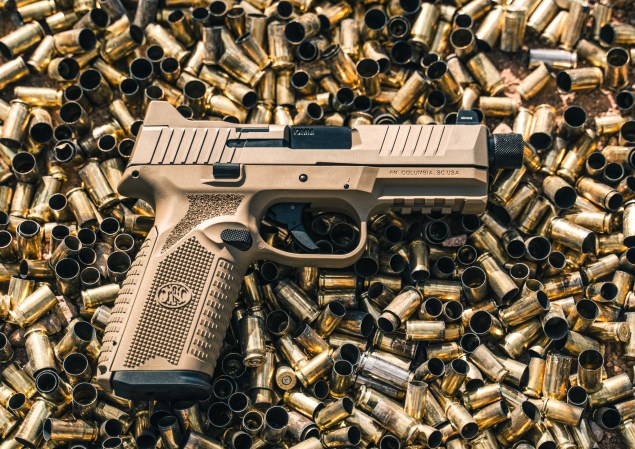
See It
Report Card
- Performance: Very Good
- Design: Good
- Value: Good
- Accuracy: 2.113 in. (Average of 10 best five-shot groups at 15 yards)
FN 510 Tactical Specs
- Action: Semi-auto striker
- Caliber: 10mm Auto
- Capacity: 22+1 / 15+1
- Weight: 1 lb. 15 oz.
- Trigger: 5 lb. 10 oz.
- Barrel: 4.71 in.
- Length: 8 in.
- Price: $1,139
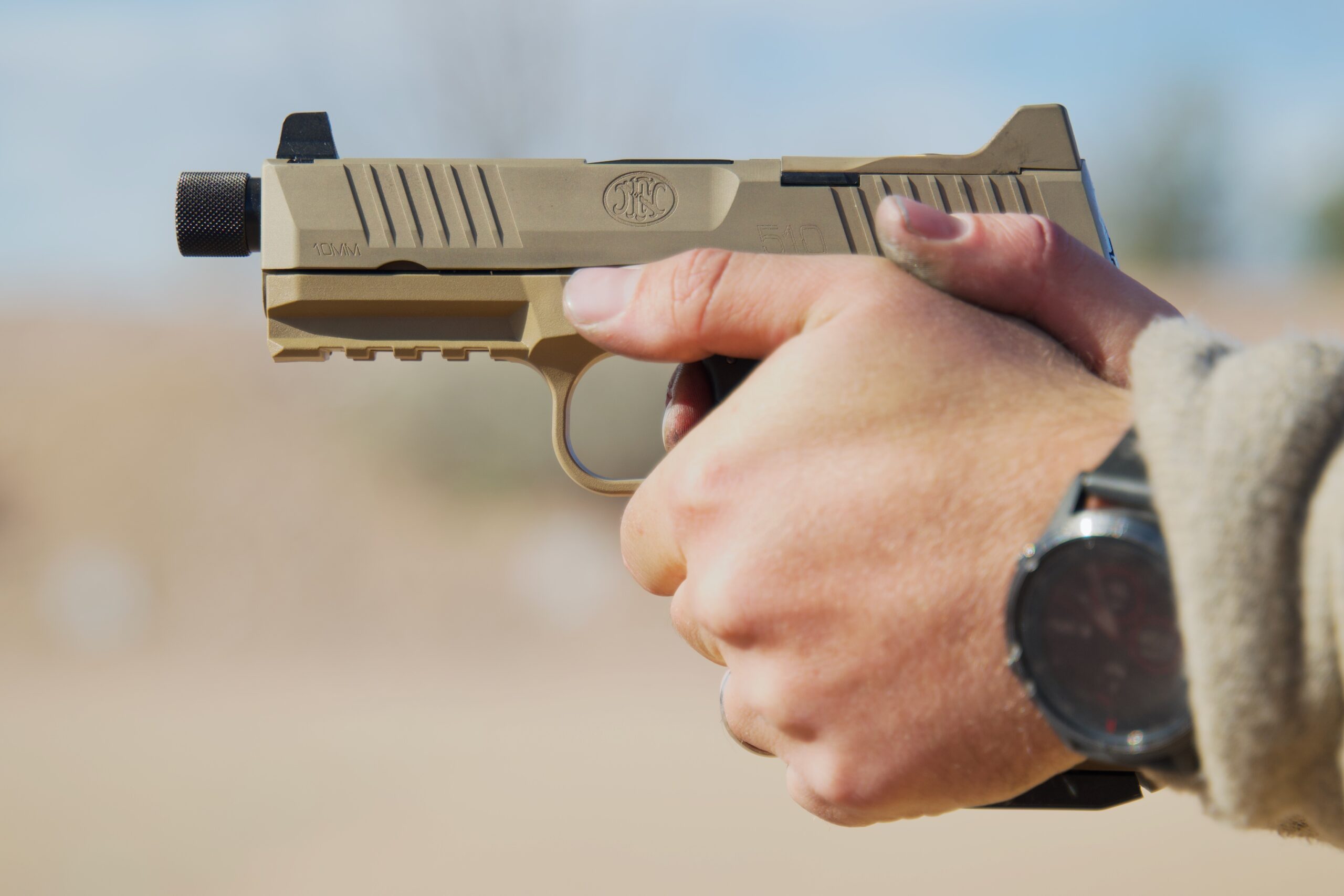
The resurgent 10mm Auto continues to spawn new pistols chambered in this potent handgun round—the latest being the FN 510 Tactical. This polymer-framed striker-fired handgun brings the heat, shipping with 22- and 15-round magazines.
To live up to the “tactical” billing, FN designed this pistol with a notably martial air. Not only is it finished in Flat Dark Earth, but the 4.71-inch barrel is threaded for a suppressor and it comes with suppressor-height night sights—a bright circle with a tritium insert on a tall front post and a simple, robust rear sight with two dimmer night sights on either side of a recessed notch.
Holding on to big boomers like the 510 Tactical is half the battle, so FN added several different types of texture in and around the pistol’s grip.
The frontstrap and backstrap have coarse raised rectangles molded into the grip, while the square shaped checking on either side of the grip is finer. Above these, where the shooter’s trigger finger and trigger-hand thumb will ride, is a patch of stippling. Having three types of texturing battling it out is visually distracting (no one would accuse the FN 510 Tactical of being elegant) but it is effective.
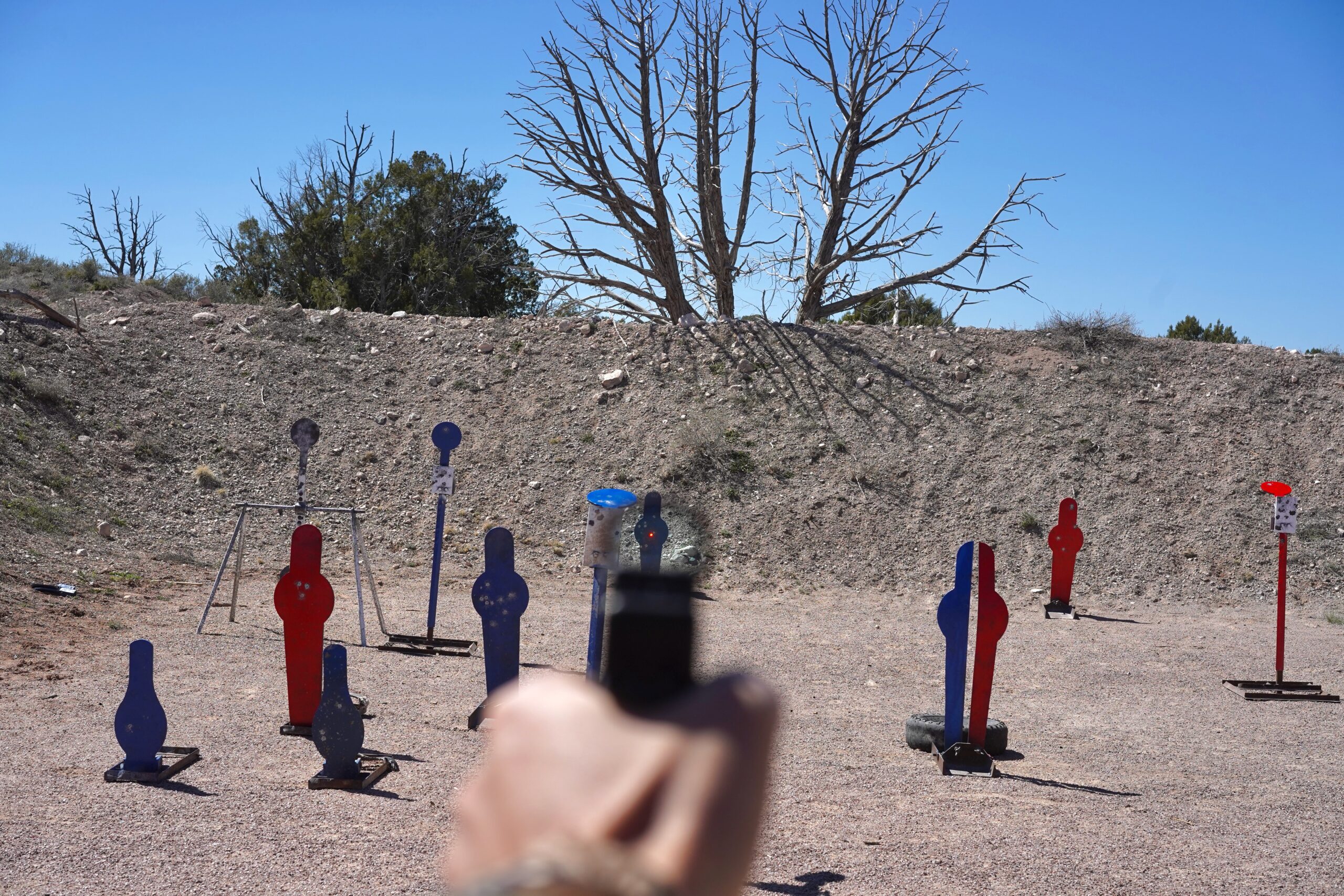
We found the pistol managed the recoil generated by the 10mm ammo fairly well, helped in part by the bulky grip, which distributes the energy over a broad area of the hand.
The pistol’s accuracy was decent, but not outstanding, though it did digest and run every round we put through it with pleasing consistency.
We like the FN 150 Tactical’s ambidextrous controls. The mag release can be manipulated from either side, and the well-built metal magazines readily drop free when it is time to reload.
The pistol comes with a couple different grip inserts to adjust the thickness of the grip. The front rail has four cross-slots for mounting accessories. And the pistol is easy to take down and service. The cut in the slide for mounting an optic is well done too.
All in all, this is a good working pistol at a reasonable price for the feature set. Check out Tyler Freel’s review of the FN 510 Tactical for more.
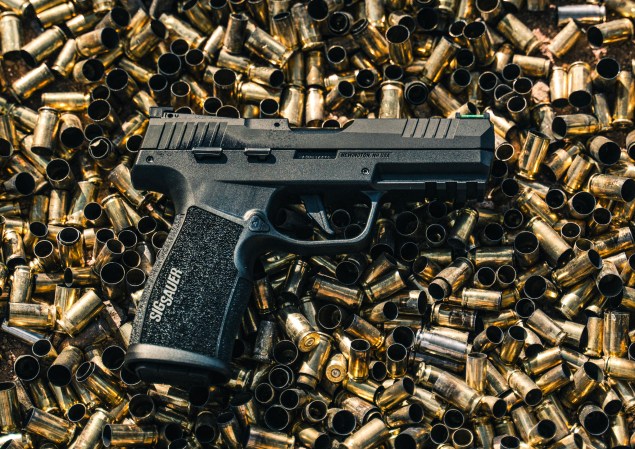
See It
Report Card
- Performance: Good
- Design: Good
- Value: Very Good
- Accuracy: 1.994 in. (Average of 10 best five-shot groups at 15 yards)
Sig Sauer P322 Specs
- Action: Semi-auto striker
- Caliber: .22 LR
- Capacity: 20+1
- Weight: 1 lb. 1 oz.
- Trigger: 4 lb. 2 oz.
- Barrel: 4 in.
- Length: 7 in.
- Price: $399
The Sig P322 looks a lot like its bigger siblings in the Sig Sauer line. For those who already shoot Sigs, it’s tempting to think of the P322 as an economical trainer, and it could be used in that role. But after putting hundreds of rounds though this fun little rimfire we found that it stands well on its own merits.
The grip ergonomics are similar to those on the P365, which is to say they are very good. Among the qualities that Sig Sauer offers is an excellent understanding of how to sculpt a pistol so it is comfortable to shoot and points naturally.
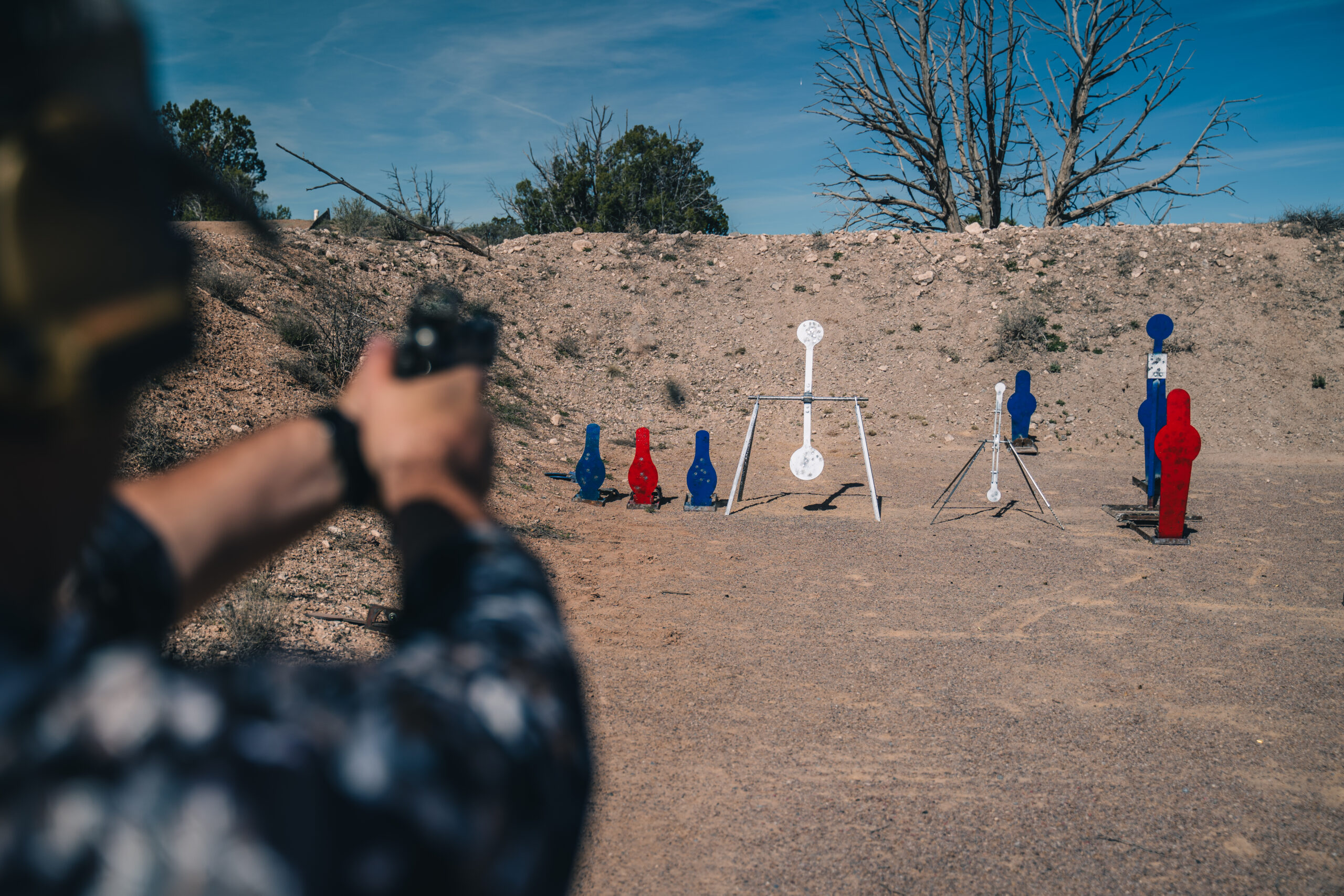
Sig designed the P322 with a double-stack magazine that holds 20 rounds. It was easy to load, ran extremely well, and is the perfect capacity for a rimfire pistol. With that many rounds on tap we were able to have a blast shooting our rimfire spinner target and other steel.
At just more than a pound, the P322 is easy to haul around and that portability would make it a good camp gun to keep in your pack.
To get the price to an affordable (and appealing) $399, Sig did cut some corners. The sights are simple and fairly cheap. The external safety and slide lock are basic and at times easy to confuse.
On the plus side, the P322 comes with some nice extras: two magazines, a slide cut for an optic, and a threaded adapter for a suppressor. The frame incorporates an accessory rail with three slots. The trigger is pretty good, too. We have an in-depth review of the P322 if you’re interested in more details.
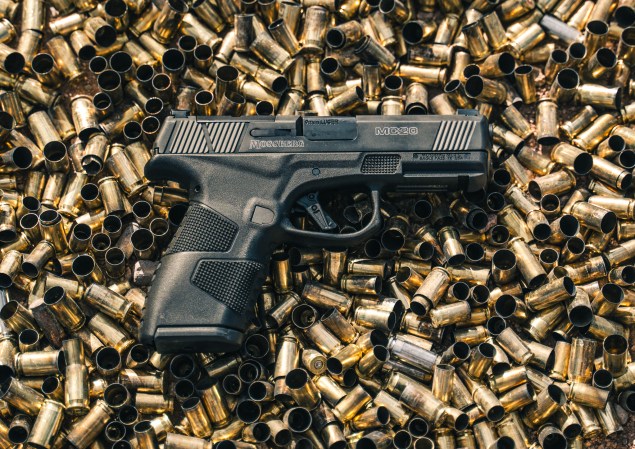
See It
Report Card
- Performance: Good
- Design: Good
- Value: Good
- Accuracy: 2.813-in. (Average of 10 best five-shot groups at 15 yards)
Mossberg MC2c Specs
- Action: Semi-auto striker
- Caliber: 9mm
- Capacity: 16+1/14+1
- Weight: 1 lb. 6 oz.
- Trigger: 6 lb. 7 oz.
- Barrel: 3.9 in.
- Length: 7 in.
- Price: $662
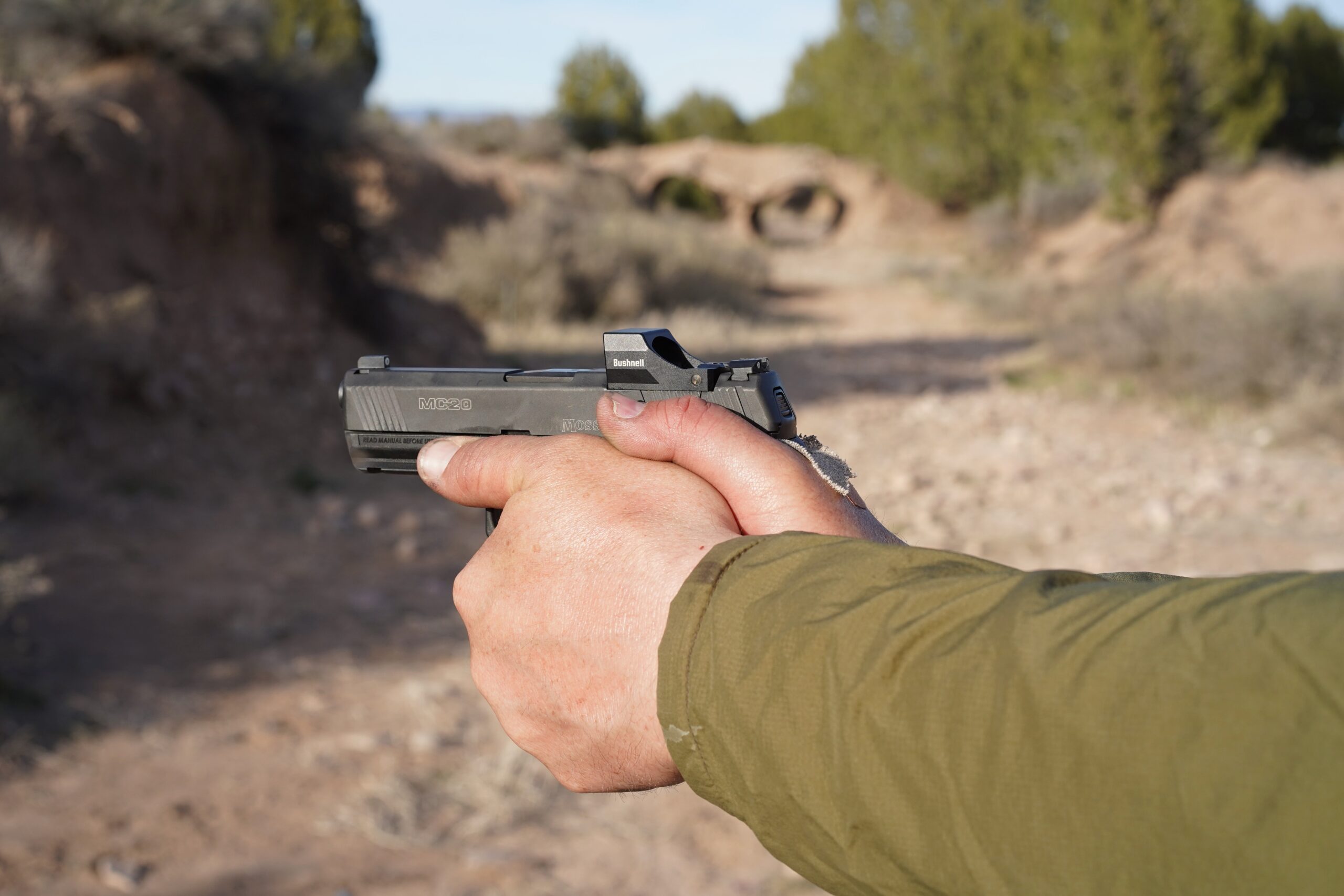
The two qualities a concealed carry pistol must have are, first, a design optimized for the task and, second, complete reliability. The Mossberg MC2c checks both boxes.
The MC2c isn’t the most refined pistol out there, but Mossberg did build it to be comfortable while worn under a shirt and easy to bring into action quickly—all in a shootable platform.
For instance, the pistol does a nice job balancing the type and amount of grip texturing on its surfaces while still being smooth and snag free. Mossberg beveled the corners on the pistol and added a couple extra cuts and radiuses around the muzzle.
The pistol has cocking serrations on the front and rear of the slide, which is helpful for positive manipulation, but the cuts aren’t so deep as to be distracting or potentially hinder the ability of the shooter to clear the pistol from concealment.
The three-dot sights are basic and serviceable. The trigger is a bit on the heavy side, and the pistol’s accuracy was adequate for close-range engagements, but it isn’t a precision long-range shooter by any stretch.
Mossberg molded a single-slot accessory rail in the polymer frame and added textured contact patches on both sides of the frame as a spot to index the support-hand thumb and help drive the pistol and control recoil.
Even though the grip is thin to help with the pistol’s concealability, we found the MC2c fairly comfortable to run hard. The recoil is a little snappy—normal for a pistol in this class—but it wasn’t difficult to shoot it quickly while maintaining a good level of defensive accuracy.
And as is becoming more common, the slide is cut to receive an optic, which adds to the MC2c’s versatility. The pistol ships with two magazines—one holding 14 rounds that sits flush with the frame, and one holding 16 rounds with an extended baseplate.
Final Thoughts on the Best Handguns of 2023
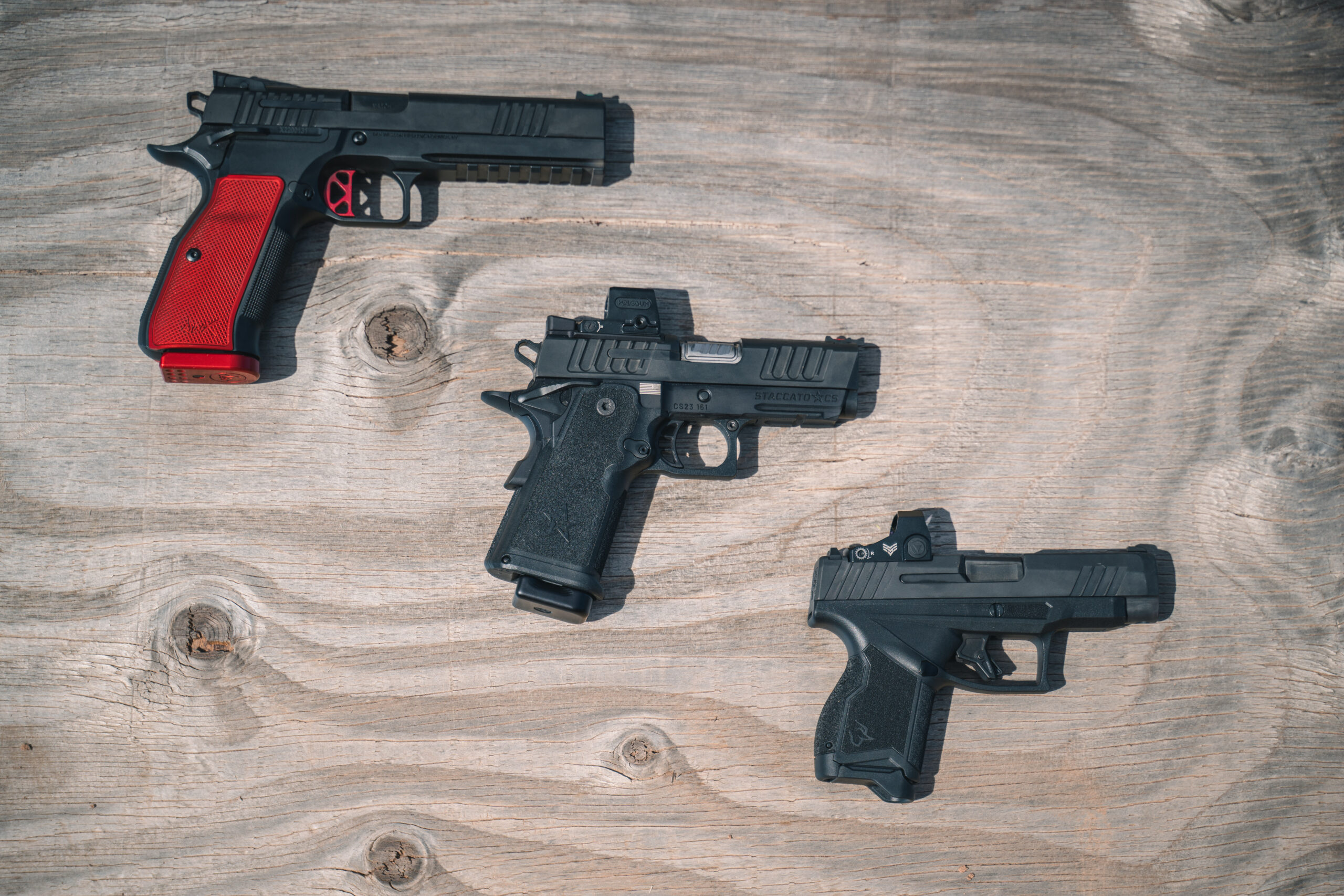
Striker-fired defensive pistols continue to dominate the world of handguns. That’s the segment most manufacturers focus on first when contemplating the rollout of new product. And that’s certainly the case when reviewing the best handguns of 2023. Shooters looking for a handgun for personal protection have a lot of options to consider across the price spectrum.
To make sure a new introduction in this realm has a chance at catching a prospective customer’s eye, more pistols are coming with optics cuts, interchangeable backstraps, multiple magazines—often with different capacities—and accessory rails. It wasn’t that long ago that this full list of features would only be found on more expensive pistols. Now even modestly priced handguns have some—if not all—of these qualities.
While the concealed carry market is undeniably large, gun makers are still catering to competitive shooters and general recreationalists too. There remains a lot of interest in 2011-type pistols and we have a steady stream of 10mms continuing to hit the market. And, of course, rimfire handguns will never go out of style.
Handgun Test Award Winners
Read Next: 9mm vs 10mm: Which Handgun Cartridge is Superior?
About Gunsite Academy
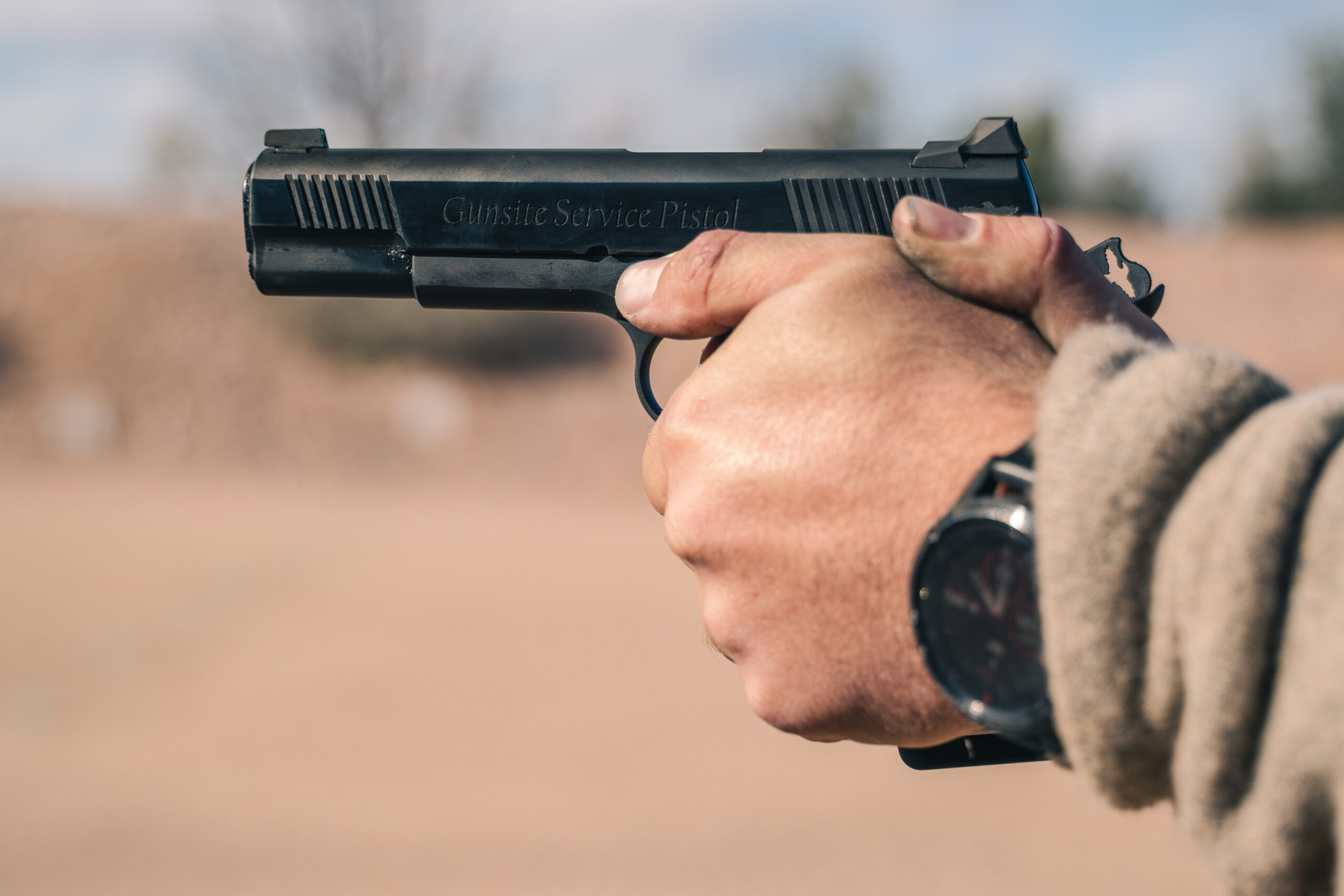
This year’s test of the best handguns was once again graciously hosted by Gunsite Academy in Paulden, Arizona. As the home of the legendary Jeff Cooper and one of the first firearm training facilities that offered classes to the general public, Gunsite is one of the premier gun training destinations in the country.
At Gunsite we work with their top-line instructors and use their excellent ranges and facilities. The genuinely friendly, helpful, and overly-accommodating staff at Gunsite allowed us to conduct our most ambitious gun test to date. You can experience the magic of Gunsite, and improve your skills, by signing up for a class.
Read the full article here

